For decades, global audiences have associated Indian cinema with Bollywood, where vibrant ‘song-and-dance’ sequences and excessive melodrama are generally regarded as perennial aspects of the nation’s cinema. Then there’s the legendary Bengali filmmaker Satyajit Ray, the face of Indian parallel or arthouse cinema. While it’s true that Bollywood or Hindi cinema has offered diverse works embedded with its own unique qualities, some of the lesser-appreciated yet excellent Indian cinema has come from the South, particularly from the Malayalam film industry, which is primarily known for its emphasis on realistic storytelling and naturalistic performances.
J.C. Daniel produced and directed the first silent Malayalam film, “Vigathakumaran” (1928). Although the film was a commercial failure, J.C. Daniel is hailed as the father of Malayalam cinema (watch Prithviraj’s starrer “Celluloid”). The first Malayalam talkie was “Balan,” made in 1938 and produced by veteran Tamil actor, director, and founder of the production company Modern Theatres. Most Malayalam films made before the nation’s independence were bankrolled by Tamil producers.
Related Read: 50 Best Hindi Films of the 21st Century
In the 1950s and 1960s, Malayalam cinema witnessed the arrival of great innovators like Ramu Kariat (“Neelakuyil,” “Chemmeen”), A. Vincent, and Thoppil Bhasi. But it was the 1970s that ushered in a new wave of Malayalam cinema as Kerala saw the growth of the film society movement. The films made by Adoor Gopalakrishnan, Govindan Aravindan, and John Abraham brought international attention to Malayalam cinema.
The 1970s also saw the remarkable directorial debut (“Nirmalyam”) of established author and screenwriter M.T. Vasudevan Nair. The 1980s was the era of iconic Malayalam films, with giants like Padmarajan, K.G. George, and Shaji N. Karun making some of their extraordinary works. This decade also paved the way for the rise of the two most outstanding star actors – Mohanlal and Mammootty.
While the quality of Malayalam films dipped in the late 1990s and 2000s, the industry experienced a renaissance of sorts in the 2010s, with phenomenal talents emerging on and off the screen. Now, Malayalam cinema remains the most exciting and innovative film industry in Indian cinema. Picking up a set of films to define a film industry’s best outputs is always challenging. Nevertheless, here are the 35 best Malayalam films that can serve as an introduction to this film industry’s excellence.
35. Maheshinte Prathikaaram (2016)
This directorial debut of Dileesh Pothan is a “serious comedy” in Fahadh Faasil‘s own words, who plays Mahesh in the film. A group of youngsters knocks him down while he attempts to defuse a conflict between his friend and them. Unable to fight back, an embarrassed Mahesh publicly vows that he will not wear his slippers again until he has avenged his humiliation. Instead of relying on the usual mix of hate and anger for revenge, the writer Syam Pushkaran intelligently uses comedy to draw reactions from the characters and develop a gripping, funny screenplay (which won the National Award).
Similar to the Best Malayalam Movies of All Time: The 15 Best Indian Films of 2016
“Maheshinte Prathikaaram” has gained cult status over the years and has been remade into Tamil as “Nimir” by Priyadarshan and into Telugu as “Uma Maheswara Ugra Roopasya” by the ‘C/o Kancharapalem’ director Venkatesh Maha. In his second feature, “Thondimuthalam Driksakshiyum,” and the third film, “Joji,” Dileesh again teamed up with Fahadh to create some really good cinema. Both films are highly enjoyable and entail relevant social commentary as well.
Where to Watch:
34. Dasharatham (1989)
Released in the same year as another Sibi Malayil-A.K. Lothidas collaborative masterpiece, “Kireedam,” “Dasharatham” wasn’t a major box office success, although, in the later years, it joined the list of under-appreciated 1980s Malayalam movies.
Unlike many working-class protagonists Mohanlal played in the 1980s, Rajiv Menon in “Dhasaratham” is a spoiled rich man who, having never experienced the unconditional love of a parent, drowns his sorrow in alcohol and other debaucheries. But something within Rajiv changes when he gets a taste of unconditional love when his friend’s children stay with him for a week. Rajiv desires a kid but wants to subvert the social constraints of a relationship. Hence, Rajiv chooses traditional surrogacy and goes through a dramatic journey of self-discovery as he finds a surrogate mother.
Related to Best Malayalam Movies: 10 Great Malayalam Movies to Stream on Prime Video
With “Dhasaratham,” Lothidas and Malayil opt for an unconventional story and theme, though the work is laced with familiar elements and techniques of a melodrama. Lothidas’ best scripts follow certain parental archetypes, but the screenwriter’s strong characterization and naturalistic dialogues rise above the limitations.
Perhaps Rajiv is Lothidas’ most unconventional father character, meticulously portrayed by the extraordinary Mohanlal. Rajiv is not a likable character or someone who makes you emotionally invest in his plight from the beginning. Yet, Mohanlal’s enchanting performance pushes us to closely observe and gradually empathize with Rajiv. In the final scene, when Rajiv asks his maid if all mothers can love their child like Annie, and when Rajiv heartrendingly conveys his despair, one can comprehend why Mohanlal is an exceptional actor in Indian cinema.
Where to Watch:
33. Aattam (2024)
Anand Ekarshi’s riveting feature-film directorial debut, “Aattam” (“The Play”), is a brilliant study of the male psyche and male entitlement. A group of men from a theatre troupe come together to speak about a sexual harassment incident that has befallen their sole female colleague. While trying to reach a consensus on what to do about the suspected man (from their troupe), the dynamics between the characters gradually lead to a commotion that unmasks the pervasiveness of patriarchy and its different shades. Aattam’s chamber drama setup might draw comparisons with Lumet’s “12 Angry Men.” But these are totally different films.
Related to Best Malayalam Movies of All Time: The 15 Best Indian Movies of 2024 So Far
The 12 jurors come together to look beyond their perceptions and prejudices to ascertain whether an individual is guilty or there’s room for reasonable doubt. In “Aattam,” these self-centered, fickle-minded, and inconsiderate men worsen the circumstances. Their frailties and hypocrisies make it impossible to close in on the truth.
At the same time, “Aattam” doesn’t limit itself to a whodunit. The filmmaker effortlessly guides us to a point where finding the culprit is of the least importance. We uncomfortably witness as even the supposedly safest space for the central female character, Anjali (Zarin Shihab), turns hostile. Anand’s smart writing doesn’t make us hate the male characters but rather regard them with profound disappointment. Despite showcasing the isolation and pain, Anjali goes through, “Aattam” ends on a fascinating note as she finds respite in art, slyly questioning the culpability of the ‘cultured’ men.
Where to Watch:
32. Thampu (1978)
Govindan Aravindan is one of India’s most original filmmakers, whose works don’t neatly fit into a particular filmmaking style. Though his movies have an observational style akin to a documentarian’s gaze, his unique visual sensibilities conjure intimate portraits of landscapes and people that have a spiritual quality.
Film scholar M.K. Raghavendra identifies one unifying aspect in Mr. Aravindan’s works: “his preoccupation is with finding the transcendental in the commonplace.” While words like ‘transcendental’ and ‘spiritual’ bring to mind another extraordinary visual poet, Robert Bresson, Aravindan’s cinema is devoid of the moral and ethical forces that drive Bresson’s movies.
Like most of Aravidan’s films, “Thampu” (“The Circus Tent”) is nearly plotless. Shot in black-and-white by Aravidan’s regular DoP, Shaji N. Karun, the drama revolves around the presence of a traveling circus troupe in a remote village situated on the banks of a river. Aravidan’s perceptive yet empathetic gaze on the rootless and impoverished circus workers would leave a huge impression on us.
The film could frustrate audiences unfamiliar with arthouse cinema since the narrative doesn’t follow a particular set of characters or strive to offer a social or moral statement. But the austere and astounding “Thampu” gracefully contemplates the life of the marginalized and captures the transitory nature of human experiences.
Where to Watch:
Thampu (1978) is available for streaming on YouTube
31. Amma Ariyan (1986)
Critics consider John Abraham one of the finest Malayalam filmmakers despite his untimely death in 1987 after directing only four feature films. And “Amma Ariyan” is unarguably his finest and most complex work. Featured in BFI’s Top 10 Indian Films list, the story revolves around the incidents following the death of a young Naxalite, upon whose death his friends travel to the village where his mother lives to inform her of the death of her only son.
Related to Best Malayalam Movies: Bresson and the agony of innocence: 3 Tragic Films from the Master of Minimalism
Cinephiles continues to discuss this film for its multi-layered narrative, making it one of the most experimental works of Indian cinema. Abraham was a gold medalist from FTII, and he began his career by assisting Mani Kaul on “Uski Roti.” His “Cheriyanchante Kroorakrithyangal” is also a fine film that critiques the feudal system and police atrocities. One must also take time for his Tamil film “Agraharathil Kazuthai,” which is inspired by Robert Bresson’s “Au Hasard Balthazar.”
Where to Watch:
Amma Ariyan (1986) is available for streaming on YouTube
30. Drishyam (2013)
Jeethu Joseph is definitely not the best among the new-wave Malayalam filmmakers. In fact, the filmmaker’s overreliance on melodrama and convenient twists in his recent films leaves us with a weary viewing experience. But there’s something undeniably enthralling in the way he sets the ordinary characters and their extraordinary conflicts in the blockbuster thriller, “Drishyam.”
The fifth Jeetu Joseph feature is preceded by another robustly scripted feature, “Memories,” starring Prithviraj. While “Memories” is about a traumatized cop on the trail of a serial killer, “Drishyam” opens as a comforting family drama (bolstered by an effortlessly low-key performance from Mohanlal) and turns into a tense tale of murder, deception, and perfect alibi.
Related to Best Malayalam Movies: 20 Indian Murder Mystery Movies That Keep The Viewers Hooked
Jeetu Joseph treats George Kutty’s laborious attempts to protect his family unit from formidable opponents with restraint and thoughtfulness. There is melodrama and a few cliched treatments, yet Joseph’s script brilliantly sets up the seemingly throwaway scenes in the first half, which is effectively recalled in the later half.
The naturalistic dialogues and performances are another great strength of “Drishyam.” While the film is clearly inspired by Keigo Higashino’s riveting novel “The Devotion of Suspect X” (although Jeetu Joseph has dismissed the claims), “Drishyam” is firmly rooted in its social-cultural milieu and features a striking moral core. Interestingly, there’s also a universality to an ordinary man’s fight to save his family. It’s why the various remakes of “Drishyam” – in Kannada, Telugu, Hindi, and Tamil – guaranteed blockbuster success.
Where to Watch:
29. Ayyappanum Koshiyum (2020)
South Indian cinema has had its share of ‘feudal rowdy’ hero/anti-hero characters. Mohanlal’s Mangalasserry Neelakandan in I.V. Sasi’s “Devasuram” (1993) is one of the best examples, in which the bad boy patriarch undergoes a change and repents for his toxicity. The movie’s familiar melodrama and gender stereotypes haven’t aged well, although Mohanlal’s charisma remains intact.
Prithviraj’s Koshy Kurian is also a sort of ‘feudal themmadi,’ but writer/director Sachy brilliantly contextualizes this character, showcasing Koshy’s strength and foolishness without often relying on melodrama. Moreover, Koshy faces a perfect rival who neither hails from the same social background nor is a one-note villain. Ayyappan (a fantastic Biju Menon) is a character we easily root for. He has shed his violent persona and has considerably mellowed out after wearing a police uniform.
But when the ego clash takes away Ayyappan’s uniform, the game of oneupmanship reaches dangerous proportions. Though the storyline is familiar, the minimal stylistic flourishes and strong character writing keep things tense and exciting (despite the long running time of 175 minutes). Sachy has done wonders in realizing his supporting cast, particularly the fierce wife of Ayyappan, belonging to the tribal community. “Ayyappanum Koshiyum” would have been a standard genre fare in the hands of another filmmaker, but Sachy turns it into a unique and rousing study of the male ego and its absurdities.
Where to Watch:
28. Pokkuveyil (1982)
Govindan Aravindan is one of the finest filmmakers produced in India. Arguably the country’s most poetic director, Aravindan’s films are revered for their visual lyricism and minimalism. His cinematographer, Shaji N. Karun, is credited with creating a transcendental world through his beautiful images.
In “Pokkuveyil,” both artists are at their peak and have created a haunting masterpiece. It is a beautiful, melancholic work of art with some of the finest images of nature captured on film. The theme of the film is the indefinability of the human mind. Aravindan recorded its audio first as a composition for the flute by Pandit Hariprasad Chaurasia and the sarod by Rajeev Taranath. The visuals were ‘composed’ according to musical notations without any script. The film won the Rajat Kamal for the second-best movie in the country for the year 1982. It was screened in several international film festivals, including Cannes.
Where to Watch:
Pokkuveyil (1982) is available for streaming on YouTube
27. Nadodikkattu (1987)
Sathyan Anthikad is one of the most commercially successful Malayalam filmmakers who mastered the art of satirizing social issues and packaging them in entertaining capsules. The director-writer combination of Anthikad and Sreenivasan is responsible for some of the wittiest popular movies in Malayalam cinema. “Nadodikkatu” stars Mohanlal and Sreenivasan in the lead roles as Ramdas and Vijayan. After losing their jobs in Kerala, they decide to migrate to Dubai to make their fortunes.
However, they get deceived and end up in neighboring Tamil Nadu, where a group of smugglers mistakenly think they are two criminal investigators. “Nadodikkattu” drew upon relevant social factors affecting Kerala in the 1980s, such as widespread unemployment and poverty. Portraying the struggles of unemployed youths seeking jobs in the Middle East, this biting Malayalam satire takes a piercing look at the quirks and inferiority complexes of middle-class society. It is among the most popular Malayalam comedies of all time.
Where to Watch:
26. Kumbalangi Nights (2019)
One of the finest mainstream films of the previous decade, Madhu Narayanan’s directorial debut “Kumbalangi Nights” takes on social taboos along with challenging several stereotypes but never lets loose its grip on the entertainment quotient. So-called alpha males crying their heart out, bringing home the widow and baby of a deceased best friend, and a mute brother falling in love with an American black woman – are all progressive themes for the middle-class milieu.
Similar to the Best Malayalam Movies of All Time: The 25 Finest Indian Movies of 2019
The stand-out scene that was widely appreciated was in which Soubin Shahir’s character, Saji, seeks psychological help from a doctor, breaking the stigma associated with counseling. The highlight package of the film is Fahadh Faasil, who delivers a terrific performance as the antagonist Shammi. Through this character, the writer Syam Pushkaran sketches a typical portrait of a patriarchal man who passes off his misogynist attitude and toxic masculinity under the pretext of family honor.
Where to Watch:
25. Piravi (1989)
After a glorious career as one of the finest cinematographers in India and giving Malayalam cinema some of its most poetic images, mostly in the films of G. Aravindan, Shaji decided to become a director. And boy, what a debut! “Piravi” not only won the National Award for Best Feature Film but also won several awards at prestigious international film festivals, including the Camera d’Or at Cannes.
The film is based on the life of professor T. V. Eachara Warrier, whose son, a student at Regional Engineering College, Calicut, was killed in police custody during the National Emergency Period of 1976. The grief of a father endlessly waiting for his son to return has been portrayed brilliantly by Premji, who won the National Award for Best Actor. Shaji’s films are filled with pathos and are as real as cinema can get. He is an uncompromising filmmaker who is among the best we’ve seen. His second film, “Swaham” (1994), was the last Indian film to compete for the Palme d’Or at Cannes.
Where to Watch:
Piravi (1989) is available for streaming on YouTube
24. Thazhvaram (1990)
Bharathan is a renowned art director and filmmaker who made his directorial debut in 1975 with “Prayanam.” Alongside Padamarajan and K.G. George, he was one of the most significant Malayalam filmmakers of the 1980s. “Thazhvaram” (“Valley”) marks his second collaboration with legendary author and screenwriter M.T. Vasudevan Nair (after “Vaishali”). Working with DoP Venu (“Irakal,” “Amma Ariyan”), Bharathan provides a riveting Western genre treatment to an otherwise simple revenge story. The filmmaker hints at the protagonist Balan’s (Mohanlal) desire to take revenge on Raju, aka Raghavan (Salim Ghouse), a friend-turned-foe.
Balan, however, is not a killer but a simple woodcutter who can’t use the first chance he gets to sneak up on Raju and kill him. Fortunately, he comes across the kindness of a father and a daughter, the same people with whom Raju is already acquainted with ulterior motives.
As the wounded protagonist recuperates under the care of the family in the valley, Balan sees their isolation and longing as familiar, and he hopes to protect them from the predatory Raju. Bharathan’s use of the Western genre motifs brilliantly blends with Vasudevan’s layered screenwriting. The only gripe about the narrative would be the expository portions in the flashback. Mohanlal’s ever-marvelous restrained performance as the stoic Balan and Salim’s flamboyant turn as the deceitful Raju further elevates this remarkable mood piece.
Where to Watch:
23. The Great Indian Kitchen (2021)
Arguably one of the best Malayalam movies to come out in recent times, the sarcastically titled film serves a disgusting assortment of patriarchy, male chauvinism, and hypocrisy and makes the viewer slowly chew it by repeating the chores and ordeal of its female protagonist. A must-watch for all moral custodians of society who have fixed notions about gender roles in a household.
The film tells the story of a newlywed woman (Nimisha Sajayan) who struggles to be the submissive wife that her husband (Suraj Venjaramood) and his family expect her to be. Millions of housewives who drudge through household chores daily that have been normalized by society will realize the injustice women have been enduring for centuries while fulfilling their expected role of duty-bound housewives. If “The Great Indian Kitchen” can bring about a positive change in even one married family, the film would have done its job. That would be the greatest reward for the film.
Where to Watch:
22. Premam (2015)
Sometimes, some films are strongly linked to us because of their sheer relatability. Alphonse Puthren’s gorgeously shot “Premam” is one such film. It makes me nostalgic for a time period, emotions, and people. This supremely entertaining romance drama offers a fly-on-the-wall look at George David’s life—particularly his attempts to find love in three different stages of his life.
Nivin Pauly is remarkable as the protagonist, whose transformation from a clowning, superficial sixteen-year-old to a mature and heartbroken cafe owner is bewitching to behold. He is ably supported by well-written female characters, offering richly textured performances (Sai Pallavi is, of course, the most dazzling among the three).
Related to Best Malayalam Movies: The 20 Best Regional Indian Movies of the Decade (the 2010s)
Premam’s plot is not particularly outstanding or original. Yet Mr. Puthren’s snapshots of life, feelings, and times are visualized in an enchanting manner that hits all the right buttons. “Premam” perfectly captures the overall light-hearted tone mixed with an undercurrent of longing and sadness. Moreover, the naturalistic, easygoing feel of the film transcends the inherently dramatic nature of the circumstances. Post-Premam, Malayali filmmakers have cooked up quite a few heartwarming rom-coms, including Girish A.D.’s “Premalu.”
Where to Watch:
21. Sandesham (1991)
Sathyan Anthikad’s “Sandesham” (“Message”) is hands down one of the most hilarious comedies in Malayalam cinema, and its satirical aspects remain relevant. Writer, director, and actor Sreenivasan is often credited as the artist who skillfully portrayed the 1980s Malayali middle-class mindset.
In “Sandesam,” Sreenivasan and Anthikad effortlessly master the humor by creating rooted characters. Thilakan plays the retired family patriarch, Raghavan Nair. Raghavan has spent much of his life away from the family, working as a station master in Tamil Nadu. Now, he is determined to enjoy his retirement life with his family. But what awaits Raghavan is more troubles and hardships.
Two of his sons—Prabakharan (Sreenivasan) and Prakashan (Jayaram)—are party workers of the rival national parties. Their never-ending petty conflicts reveal the hypocrisies and sycophancy of party politics. There’s the familiar Anthikad brand of melodrama and sentimentality. But almost all the funny circumstances strike the right chord and deliver relevant sociopolitical messages with a light touch. The performances of the ensemble cast are uniformly brilliant. The ‘Poland’ dialogue or the ‘Nariyal Ka Pani’ moments will always evoke laughter from us, even if we are just thinking about it.
Where to Watch:
20. Manichitrathazhu (1993)
Fazil’s “Manichitrathazhu” (“The Ornate Lock”) is one of the near-perfect genre exercises in Malayalam cinema. It opens as an atmospheric horror with a couple – Ganga (Shobana) and Nakulan (Suresh Gopi) – arriving at their allegedly haunted family home. The restless spirit of a Bharatanatyam dancer is said to be trapped in a forbidden room in the mansion.
Gradually, with the arrival of psychiatrist Dr. Sunny (Mohanlal), the narrative turns into a riveting psychological thriller. The comedic aspects (a few slapstick) of “Manichitrathazhu” don’t always work and also look dated. Yet one of the film’s strengths is the way Fazil and his DoP Venu beautifully and chillingly capture the decor of the labyrinthine mansion.
The other apparent reason to watch “Manichitrathazhu” is Shobana’s astounding performance, which often rightfully overshadows the naturalistic performer Mohanlal. Shobana, an accomplished Bharatanatyam dancer, lends authenticity and beauty to the pivotal dance sequence, which is obviously lacking in the many remakes (although competent actors played the role in Kannada, Tamil, and Hindi versions). M.G. Radhakrishnan’s soundtrack is also pleasant and moving.
Where to Watch:
19. Kummatty (1979)
Following “Thampu,” Govindan Aravindan made “Kummatty” (“The Bogeyman”), which also focuses on performers. But the cinema verite approach in “Thampu” is replaced with a little fantastical visual presentation of rural culture and landscape in “Kummatty” – one that looks at the world with a childlike curiosity and joy. Set in a village in the Malabar region – where G. Aravindan was born and brought up – “Kummatty” is folklore about a wandering pied-piper-like magician who charms the village children to dance and sing to his folk songs. One of his magical tricks affects a kid, but it all ends on a heartrending note.
Like most of his films, “Kummatty” also doesn’t have a perfectly fleshed-out plotline. Mr. Aravindan and his cinematographer, Shaji N. Karun, simply use the semblance of a narrative to weave an astounding visual tapestry of country life and its landscapes. The elegant blend of realism and magical realism creates a hypnotic effect on the viewers. The lush soundscapes and mesmerizing imagery of “Kummatty” invokes a nostalgic feel for one’s childhood. Although it is a beautiful folktale, there are undercurrents of tragedy in it, but eventually, in Aravindan’s meticulous storytelling, the feelings of empathy and compassion overshadow everything.
Where to Watch:
Kummatty (1979) is available for streaming on YouTube
18. Oru Vadakkan Veeragatha (1989)
Hariharan’s historical drama, “Oru Vadakkan Veeragatha” (“A Northern Story of Valor”), scripted by the great M.T. Vasudevan Nair, is a fascinating retelling of the life and times of Chandu Chekavar, a misunderstood warrior branded as a traitor. Set in the 16th century, Chekavars belong to a warrior community in the Malabar region.
The medieval ballads known as ‘Vadakkan Paatu” offer a fictional account of the glory and courage of the Puthuram house, led by the patriarch Kannappa Chekavar. Chandu was orphaned at a young age and is the son of Kannappa Chekavar’s sister. The boy was adopted by the Puthuram house, and Chandu is portrayed as a jealous and duplicitous individual in the ballads.
In M.T. Vasudevan’s reinterpretation of the tale, Mammootty’s Chandu Chekavar is shown as a boy who feels out of place at the affluent Puthuran house. His cousin, Aromal, belittles and insults him at every turn, which gradually turns into a bitter rivalry. Mammootty’s nuanced and heartbreaking central performance perfectly anchors the film. The legendary actor won his first National Award for playing Chandu. There are also extraordinary supporting performances from Madhavi, Suresh Gopi, and Captain Raju. The film’s Kalari sparing scenes are brilliantly staged, marked by aplomb and ferocity.
Where to Watch:
17. Mathilukal (1990)
Adoor Gopalakrishnan’s “Mathilukal” (“Walls”) is one of the quieter and philosophical prison dramas ever made. Based on the legendary Malayalam writer Vaikom Muhammed Basheer’s 1965 novella of the same name, the film contains autobiographical elements and weaves together a tender love story between Basheer and a female inmate, Narayani (voiced by K.P.A.C. Lalitha).
Set in the 1940s, “Mathilukal” opens with Mammootty’s Basheer incarcerated on charges of sedition by the British government. Right from the first frame, Gopalakrishnan shows us that Mr. Basheer isn’t the usual freedom fighter character we see in Indian movies. He is a witty, inquisitive man whose unparalleled charisma helps him strike friendship within the walls. Yet the solitude of prison life gradually creeps up on Basheer, burdening him with depression and forlornness.
Basheer falls in love with a woman from the neighboring prison compound during a phase of loneliness. Without the possibility of seeing each other—a huge wall separates them—the duo creatively and beautifully exchange their deepest feelings. The childlike excitement with which Mammootty plays the renowned author is positively infectious. “Mathilukal” is a very nuanced and poignant film that raises pertinent questions about loneliness and freedom. The film won the FIPRESCI Prize at the 1989 Venice Film Festival.
Where to Watch:
16. Ee. Ma. Yau (2018)
Lijo Jose Pelliserry is perhaps the uncategorizable and fiercely original filmmaker after Govindan Aravindan. Though his initial films, “Nayakan” (2010) and “City of God” (2011), were pulpy plot-driven tales, from the Fahadh Faasil starrer “Amen” (2013), Pelliserry has zeroed in on distinctive aesthetics. In fact, it is through his brilliant mise en scene that Pelliserry was able to make these wild yet mesmerizing swings between the absurd and poignant.
In “Angamaly Diaries,” Mr. Pelliserry proved himself to be a master at weaving chaos, and yet we can find a fluidity to the events in the film. The filmmaker’s pursuit of chaos only became more spectacular in “Jallikattu,” once again set in a remote village, where an escape of a buffalo is used to dispense a darkly funny commentary on the relationship between masculinity and violence.
Related Read: Every Lijo Jose Pellissesry Film Ranked
Myriad human emotions simmer and eventually explode in Pelliserry’s films. This aspect is perfectly executed, and the idiosyncrasies of human behavior are fascinatingly satirized in “Ee. Ma. Yau.” Set in a coastal fishing village, the film revolves around an old mason, Vavachan’s funeral. The son, Eeshi (Chemban Vinod Jose), faces many complications and animosities before burying his father.
“Ee. Ma. Yau” is a great film built around a funeral, which is touching at moments, but, for the most part, it brings out the human absurdities without being patronizing. Pelliserry powerfully portrays an individual caught between various social expectations. Though the narrative is deeply rooted in its social-cultural environment, the dynamics explored within the community are universal.
Where to Watch:
15. Namukku Parkkan Munthiri Thoppukal (1986)
Dubbed as a taboo-breaking romance drama of its time, Padmarajan’s “Namukku Parkkan Munthiri Thoppukal” is a testament to the revered filmmaker’s unorthodox treatment of familiar love stories. Made a year before Mr. Padmarajan’s other masterpiece – “Thoovanathumbikal” – “Munthiri Thoppukal” revolves around Solomon (Mohanlal), who embraces farming life by owning a vineyard in a remote region of Karnataka.
While visiting his mother in Mysore, Solomon is attracted to their new neighbor, Sofia (Shari). Sofia lives with her mother, sister, and the authoritative and alcoholic stepfather, Paul (Thilakan). The blossoming of love between Sofia and Solomon unfolds with gentle graciousness that’s rarely seen in movies of a similar kind.
Sofia was born out of wedlock, and Paul’s discriminatory attitude has followed her throughout her life. Life with Solomon in the vineyards represents freedom for Sofia. However, Paul’s conflicts with Solomon and the dysfunctional family dynamics at Sofia’s household threaten to ruin the romantic relationship. Malayalam cinema masters have often approached their stories with realism, compassion, and sensitivity, making us profoundly relate to their emotionally mature characters. In fact, the elegance with which Padmarajan writes his characters and their interactions is fascinating to watch.
Mohanlal, as the emotionally honest Solomon, is the embodiment of trust and love. The thespian Thilakan has brilliantly played antagonists in several (Malayalam and Tamil) films, but Paul Pailokkaran is one of his most despicable characters. “Munthiri Thoppukal” is known for its shocking final portions. However, what’s more memorable is the feelings of hope and reassurance conveyed by the film’s ending.
Where to Watch:
14. Yavanika (1982)
Known for his unconventional work, K. G. George is noted for his deep psychological analysis and character study of the human mind in his films. He made his directorial debut with “Swapnadanam” (1975) and became a strong presence in the new cinema movement in Kerala that became active during the early 1970s.
Related to Best Malayalam Movies of All Time: K. G. George and the Craft of Flashback
“Yavanika” stands out as one of the most commercially successful yet artistically superior films of the 1980s. In the form of a detective thriller, it explores the backstage drama of a traveling drama troop. The plot is structured around the search for an unpopular tabla player of the troupe who suddenly disappears. The film is regarded as the finest mystery or investigative thriller ever made in Malayalam cinema. It is one of the greatest screenplays written in Malayalam cinema, and the performances of Bharat Gopi and Thilakan are phenomenal. It won the Kerala State Film Award for Best Film, Best Story, and Second Best Actor for Thilakan.
Where to Watch:
13. Kanchana Sita (1977)
There are many fascinating reworkings or retellings of Valmiki’s epic poem, “Ramayana.” Sreekantan Nair’s 1961 play Kanchana Sita is one such grounded and brilliant interpretation of the Uttara Kanda (the final section of “Ramayana” that deals with Lord Rama’s return to Ayodhya and his coronation).
In Govindan Aravidan’s adaptation of the play, we see the epic heroes presented as tribal people (Chenchus, who claim they belong to the clan to which Rama belonged). The filmmaker experimented with the casting, choosing the tribals to play the central roles. The core narrative of Aravindan’s “Kanchana Sita” deals with Rama’s conflicted feelings as he doubts his wife Sita’s chastity and abandons her in the Dandakaranya forests.
“Kanchana Sita” is definitely the least accessible Aravindan film. Even if you have a decent knowledge of Ramayana, Aravindan isn’t a filmmaker interested in maintaining narrative consistency. So, the style and techniques used here can be impenetrable even to knowledgeable Indian viewers. Yet this is one of the rare, imaginative, philosophical, and humanized portrayals of gods and mythological figures. Aravindan’s symbolization of Sita as mother nature, his portrayal of Rama’s guilt and loneliness, and the poetic images of the natural surroundings make this incredibly captivating. Govindan Aravindan won his first National Award for Direction for “Kanchana Sita.”
Where to Watch:
Kanchana Sita (1977) is available for streaming on YouTube
12. Perumthachan (1991)
“Perumthachan” (“The Master Carpenter”) was director Ajayan’s first and only film (son of filmmaker and playwright Thoppil Bhasi), which was nominated for the Golden Leopard at the Locarno Film Festival. For decades, Ajayan tried (until his death in 2018) to adopt M.T. Vasudevan Nair’s 1957 children’s story, Manikyakallu, which showcases a prince’s magical, adventurous journey through his kingdom.
Though Ajayan wanted to adopt Manikyakallu even while he worked as an associate director of Bharathan and Padmarajan, his debut feature turned out to be “Perumthachan,” based on a story of the renowned author and screenwriter. Vasudevan – who also wrote the script – deals with themes of jealousy, ego, and social hierarchies in this period drama.
The master actor Thilakan plays the master architect and sculptor Raman, whose legend is familiar among noble families. Raman, a pious man belonging to a mixed caste, submits himself to the traditional values and social hierarchies of the time, effortlessly moving between the varied jobs of building temples, wooden bridges, and carving sculptures. But the same can’t be said about his young son, Kannan. He is also a master craftsman like his father, but his inherently rebellious nature makes him question the stringent social norms. It all leads to a burgeoning conflict and a shocking ending.
The versatile Thilakan offers his career-best performance as the incredibly disciplined and restrained Raman. Thilakan subtly reveals the darker shades of his characters, whose devotion to his craft and values is what eventually makes him commit the unpredictable dark deed. The film also doesn’t offer easy answers to why Raman did what he did in the end. “Perumthachan” got DoP Santosh Sivan – the frequent collaborator of director Mani Ratnam – the first of his four National Awards for cinematography.
Where to Watch:
11. Thaniyavarthanam (1987)
This was the first film that kicked off the Malayil-Lohithadas partnership. The film discusses a variety of topics, such as superstition and orthodoxy in rural Kerala, attitudes towards mental illness, the difference in attitudes between people of different generations, and the decline of once-proud Nair “joint families. Apart from the main storyline concerning Balan (Mammootty), the movie also makes a subtle sketch of the life of people in a “matriarchal” society. The uncle of Balan (played by Thilakan) enjoys so much influence in the family affairs that he becomes a catalyst for Balan’s slow but steady decline to lunacy.
Thilakan recommended Mammootty for the lead role. The writer-director duo has given the Malayalam film industry some of its acclaimed classics, including Dasharatham and Bharatham, for which Mohanlal bagged a Best Actor National Film Award. Forbes India included Mohanlal’s performance in the film on its list of “25 Greatest Acting Performances of Indian Cinema.”
Where to Watch:
10. Vanaprastham (1999)
“Vanaprastham” is the crowning glory in Mohanlal’s acting career, for which he won yet another National Award. Many consider his tragic performance to be the pinnacle of his acting career. The film chronicles the life of a lower-caste Kathakali artist who, despite receiving great acclaim in his career, suffers from repeated rejections and abandonment in his personal life. Mohanlal plays this character.
Like most Shaji N. Karun films, this one has pain written all over it. An Indo-French production, “Vanaprastham” excels in every department of filmmaking. The cinematography is exceptional, and Zakir Hussain’s soul-stirring soundtrack is truly world-class. Critics deservingly regard Shaji’s third film, which was screened at Cannes, as one of the finest Indian films. It won multiple national awards, and after the screening, the Government of France conferred Shaji the title Ordre des Arts et des Lettres.
Where to Watch:
9. Elippathayam (1982)
The legendary Adoor Gopalakrishnan’s – who is often considered a worthy heir to Satyajit Ray – third feature film, “Elippathayam” (“Rat-Trap”), follows a trapped, sole male heir of a feudal land-owning family, which somehow reminds us of Mr. Ray’s 1958 masterpiece, “Jalsaghar.” Unni and his two sisters, Rajamma and Sridevi, are the key players in this portrait of a dysfunctional family and a decaying household. Though the social changes around Unni have made the feudalistic lifestyle redundant, Unni holds on to the fragments of the feudal mindset, trapping his sister into a life of servitude.
Like most of Adoor’s masterpieces, “Elippathayam” is a subtle character study. Through profound visual touches, we gradually witness Unni’s mental breakdown, and the metaphor of the rat trap is used in the most impactful manner. In fact, Mr. Gopalakrishanan is a master at employing symbolism, and apart from the rat trap, one of the revelatory moments is the use of an airplane to symbolize the two sisters’ nature and plight.
The biggest strength of Adoor’s films is the nuanced, evocative performances. Here, Karamana Janardanan Nair, as the emotionally cold Unni, and Sharada, as Rajamma, are able to convey their mental and emotional state using the subtlest of physical gestures. “Elippathayam” premiered at the 1982 Cannes Film Festival in the Un Certain Regard section.
Where to Watch:
Elippathayam (1982) is available for streaming on YouTube
8. Thoovanathumbikal (1987)
The film is partly based on Padmarajan’s novel Udakappola. It revolves around Jayakrishnan (Mohanlal), who falls in love with two women: Radha (Parvathy), a distant relative of his, and Clara (Sumalatha), an escort in town. People widely note the film for its rich film score and songs, dialogues and characters, detailed screenplay, and the phenomenal Mohanlal and Sumalatha performances.
Rain is a recurring theme and is portrayed almost as a character in the film. Set in Thrissur, the film displays the typical Malayali bachelor lifestyle in many scenes. One such scene where Mohanlal invites Ashokan for a lemonade drink and gets into the city bar straight away has now become an iconic call sign for a drink offer between Malayalis.
Many consider “Thoovanathumbikal” to be the most romantic movie ever made in Malayalam cinema history. The film deals with the most intense human emotions: love and lust. Years after its release, the movie has turned into a cult classic, especially among the youth. In a 2013 online poll, IBN Live listed it as the 8th greatest Indian film of all time.
Where to Watch:
7. Nanpakal Nerathu Mayakkam (2022)
With “Nanpakal Nerathu Mayakkam” (“A Mid-Day Slumber”), Pelliserry was criticized for its rigid visual style, which spurred emotional detachment. However, I genuinely felt Pelliserry was scaling his creative peak with this transcendental and philosophical film. Set mainly in a Southern Tamil Nadu village, Pelliserry’s bi-lingual drama follows a busload of Malayali family members traveling back to Kerala after their pilgrimage to Velankanni. During the journey, James (Mammootty), a gruff middle-aged man, asks the driver to pull over, wanders into a nearby village, enters a home, and assumes the identity of the cheery Sundaram, a man who has disappeared two years before.
No clear-cut answers are offered to this miracle or tragedy. But it’s quite a rewarding experience as we faithfully follow a person casually embodying another person’s identity. The confusion within James as he spends time in the village as Sundaram and the chaos unleashed upon the village following the intrusion of stranded Malayali tourists is portrayed with extraordinary nuance. Moreover, Pelliserry and his co-writer Hareesh’s culturally specific touches (from Thirukkural to Kannadasan songs) elevate the film’s subtext.
Most importantly, “Nanpakal Nerathu Mayakkam” is blessed with a tour de force performance by Mammootty, who might be the only capable actor to embody these dual identities. Overall, this meditative drama on memory, identity, and spirituality is the best among Pelliserry’s formally ambitious works – one that’s on par with the works of auteurs like Tsai Ming-liang and Apichatpong Weerasethakul.
Where to Watch:
6. Kireedam (1989)
Sibi Malayil and his screenwriter A. K. Lohithadas have given Malayalam cinema some of its most commercially and critically successful films. ‘Kireedam’ is yet another masterclass in acting from Mohanlal, who won the National Film Award – Special Mention “for portraying a young man’s agony and pain marvelously and in unique style.”
The film chronicles the life of a young man whose life turns upside down when he intervenes in a dispute to rescue his father (a cop) from a ruthless local outlaw. An inadvertent moment of rage and the series of unanticipated repercussions that follow it form the poignant focus of this Malayalam classic. Sibi Malayil paints a solemn portrait of a distraught young man caught in the web of an intricate father-son dynamic, violence, and personal failings. ‘Kireedam’ was remade in six other languages.
Where to Watch:
5. Vidheyan (1994)
The film is a cinematic adaptation of the novel Bhaskara Pattelarum Ente Jeevithavum by Malayalam writer Paul Zacharia. Zacharia’s novella was inspired by a real-life character named Patela Shekhara Gowda alias Shiradi Shekhara. ‘Vidheyan’ explores the master-slave relationship in a South Karnataka setting and is a brilliant psychology study of the topic.
Mammootty and M. R. Gopakumar play the lead roles of master and slave, respectively. Mammootty’s performance is arguably the greatest portrayal of a villainous character in Indian cinema. The actor is terrifying and menacing as a ruthless landlord who does as he pleases and completely owns his slave. Adoor masterfully examines the changing dynamics between the master and slave as the film progresses. The film won the National Film Award for Best Feature Film in Malayalam and the Best Actor Award for Mammootty. Adoor’s Mathilukal, Kodiyettam, Mukhamukham, Kathapurushan, and Elippathayam are all brilliant films that are must-visits.
Where to Watch:
4. Irakal (1985)
“Irakal” is considered the first dark movie in Malayalam and one of the best works of K.G George. The film is an in-depth exploration of the psychology of violence and its theme in undertones, depicting the political conditions of the country during that time, including the Emergency. Indira Gandhi and her son Sanjay Gandhi are said to be symbolically presented by Thilakan and Ganesh, respectively, in the film, though George didn’t say it directly. Dileesh Pothan’s ‘Joji’ is said to have taken inspiration from the film with regard to theme.
The film won two Kerala State Film Awards—Second Best Film and Best Story. George has given Malayalam cinema many groundbreaking classics. “Lekhayude Maranam Oru Flashback” (1983), “Adaminte Vaariyellu” (1983), and “Panchavadi Palam” (1984) are some highly engaging films that should definitely be explored by cinephiles.
Where to Watch:
3. Nirmalyam (1973)
“Nirmalyam” marks author and screenwriter M.T. Vasudevan Nair’s directorial debut. Based on the writer’s own short story, the film is regarded as one of the most important classics of Malayalam cinema. The narrative revolves around a dilapidated temple in a village and its caretaker & oracle (Velichappad) – a spectacular performance from P.J. Antony.
Due to rapid modernization and lack of opportunities, the people of the village have either migrated or have lost faith in the rituals and God. The newly appointed priest is more interested in getting a government job and helping his impoverished family than continuing the tradition. However, the oracle, despite the extreme poverty, remains steadfast in his devotion to the goddess.
Also Read: 50 Years of Nirmalyam (1973): Timeless, Introspective, and Radical
“Nirmalyam” is about a religious individual questioning his faith as larger internal and external issues loom over his family and community. In many ways, the film also boldly showcases how religion and culture are slow in keeping up with the rapid social changes. On the one hand, we see how the Velichappad remains a captive of blind faith and tradition. On the other hand, we witness how traditional arts are fiercely commercialized and exoticized by the changing times. Some of the character portrayals in “Nirmalyam” now look very outdated. Yet, this is a genuinely original and hard-hitting classic with an unforgettable ending.
Where to Watch:
2. Anantaram (1987)
Regarded as the greatest living Indian filmmaker, Adoor Gopalakrishnan is the brightest jewel in the crown of Malayalam cinema. He pioneered the new wave in Kerala with his debut film “Swayamvaram” in 1972. With several documentaries and 12 feature films to his credit, almost every film of his can find a place in this list. “Anantaram” is arguably his best work. In fact, it is my favorite Indian film of all time. It stars Ashokan and Shobhana as the lead, with Mammootty in an extended guest role. The film is structured like a monologue. It develops through a commentary by the protagonist about himself in the first person.
Related to Best Malayalam Movies: The 10 Most Essential Adoor Gopalakrishnan Movies
In an interview, Adoor said, “Anantaram is basically about perceptions. About a young, impressionable boy who lacks some sort of functioning. Though my life was not very familiar, I was searching for the familiar experience of growing up and struggling with life and relationships. What is in the frame and what is juxtaposed to it just outside the frame… or let us put it this way, it has to do with attuning to the reality just beyond perception. Actually, this is part of the daily experience, though we don’t analyze it.”
Where to Watch:
Anantaram (1987) is available for streaming on YouTube
1. Esthappan (1980)
The film blends together the Biblical story of the deeds of Christ and the way society responded to him with the life of Esthappan, whose life mystifies others. Esthappan is a fisherman who lives in a seashore colony. His story unfolds through narrations by other fishermen about his miraculous acts. Through the contradictory statements of these people, a mystical figure of Esthappan unfolds. Again, Shaji N. Karun’s ethereal images cast a spell on the viewer. Through the prophetic dialogues in the film and the theme of mysticism, Aravindan raises existential questions about life, death, and everything in between.
Related to Best Malayalam Movies: How Neeraj Ghaywan’s ‘Masaan’ amplifies its themes through Visual Storytelling
“Esthappan” won the Kerala State Film Awards for Best Film and Best Director. If possible, readers of this list must do themselves a favor by watching Aravindan’s entire filmography. He is an incomparable artist whose ingenuity was reflected in his strikingly beautiful mise en scènes.
Where to Watch:
Esthappan (1980) is available for streaming on YouTube

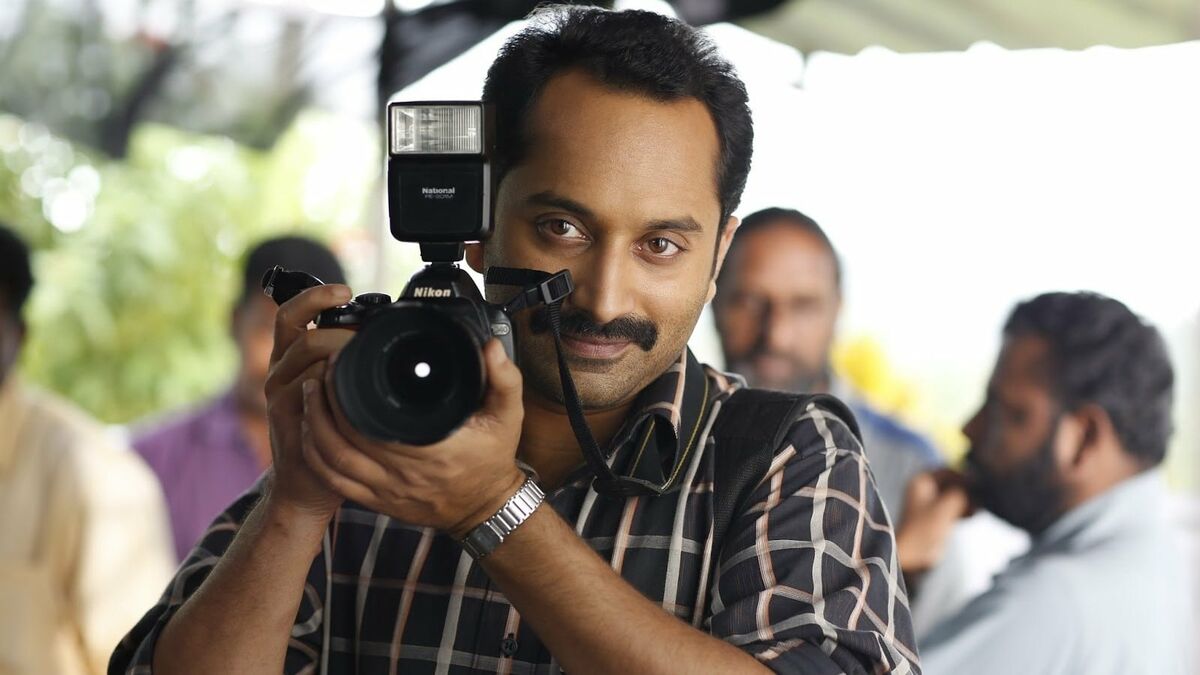
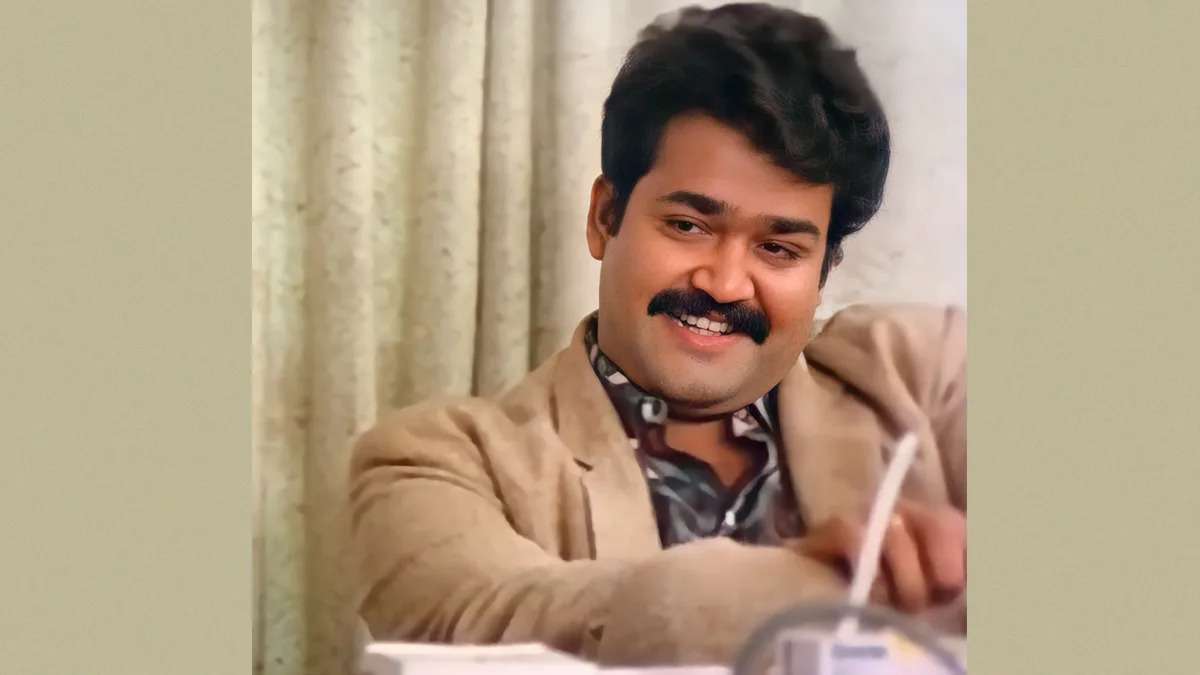
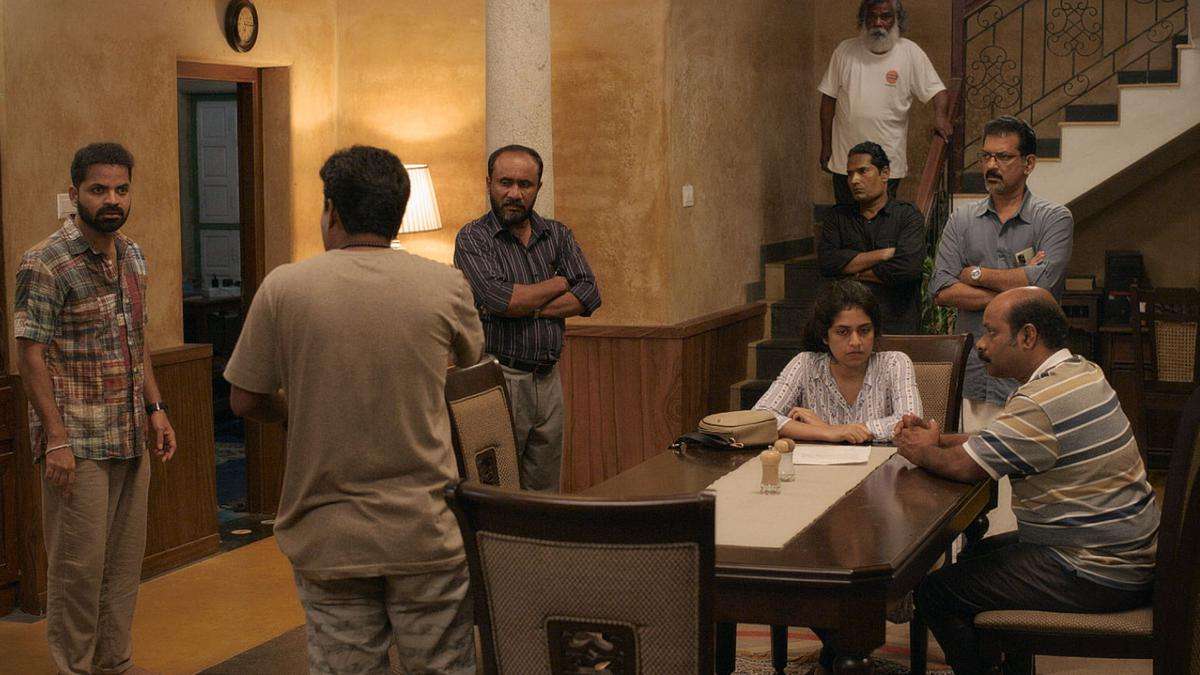
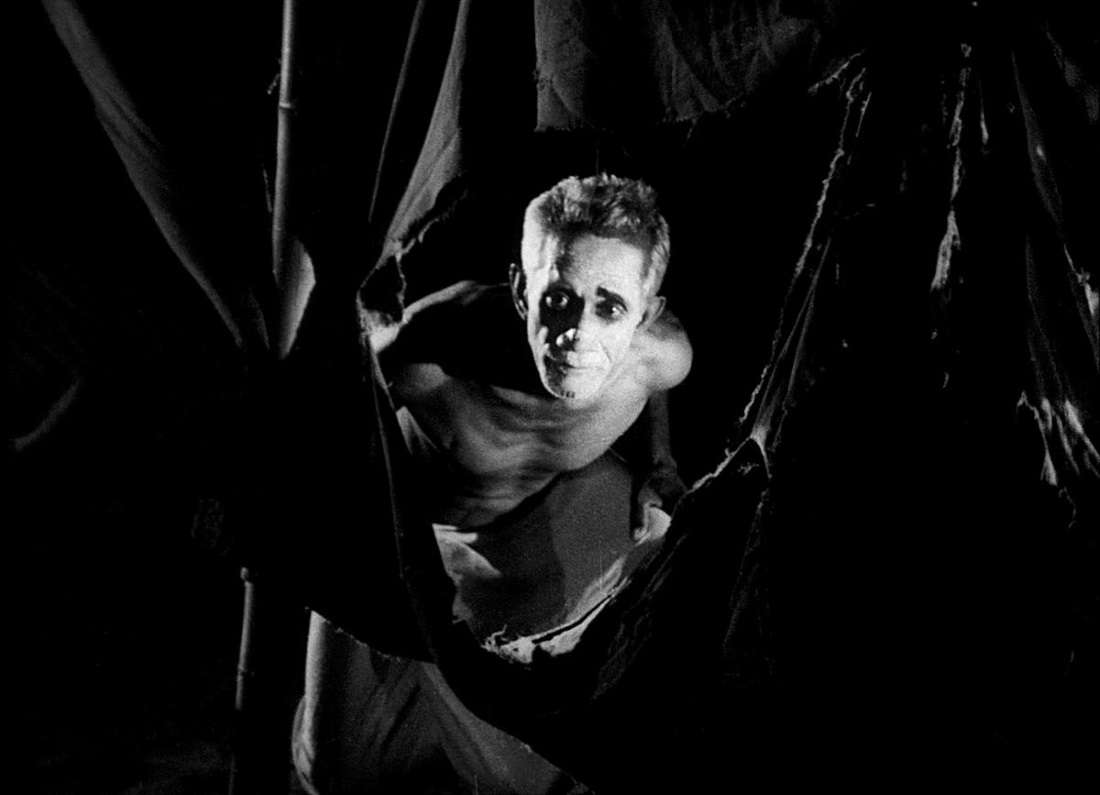

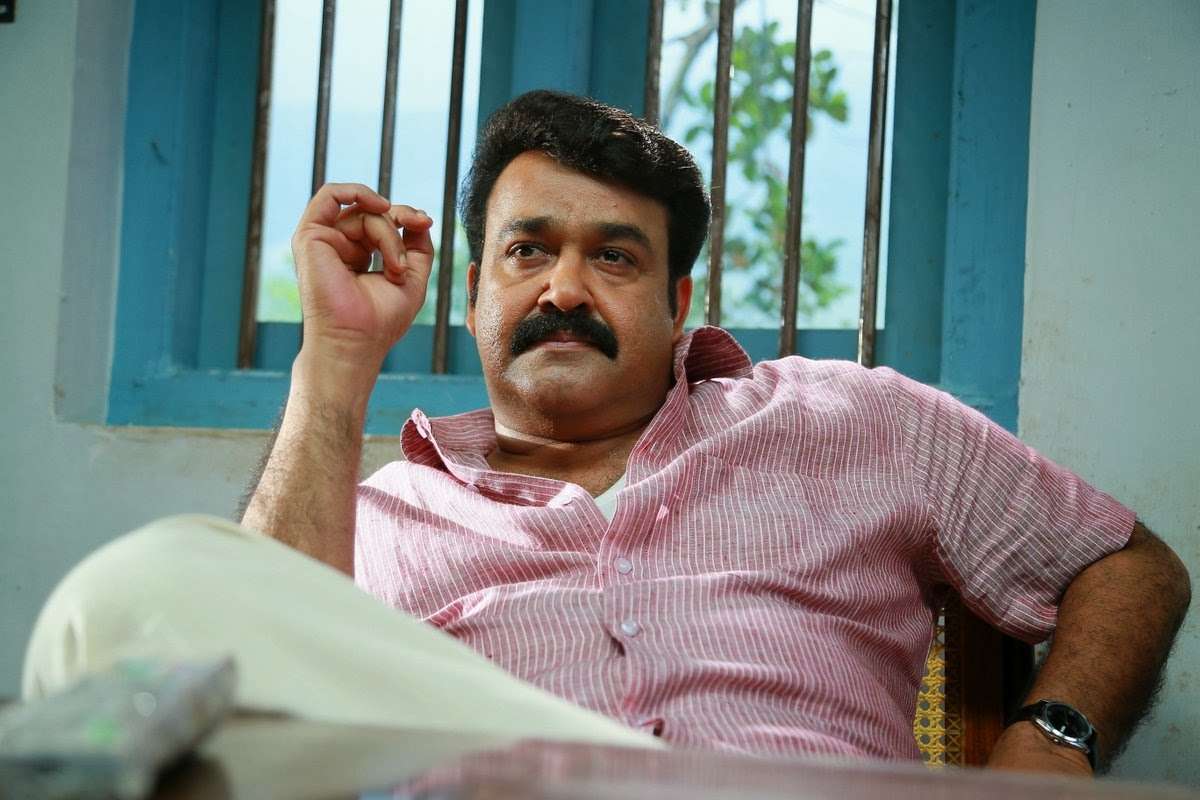
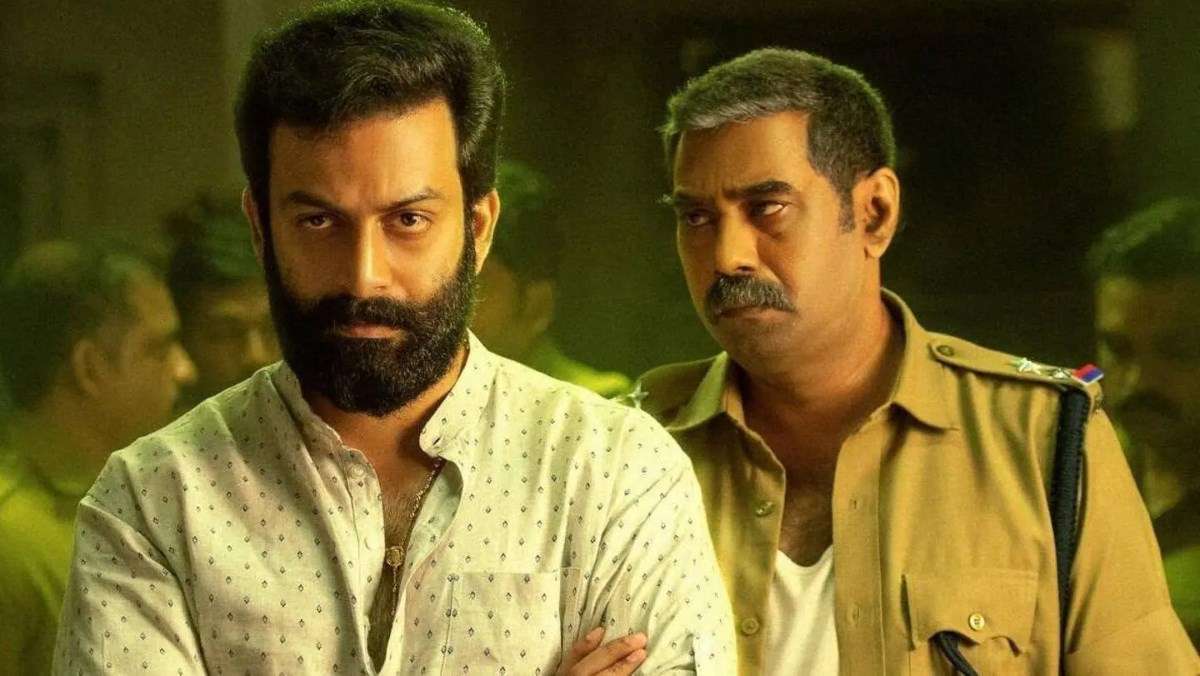
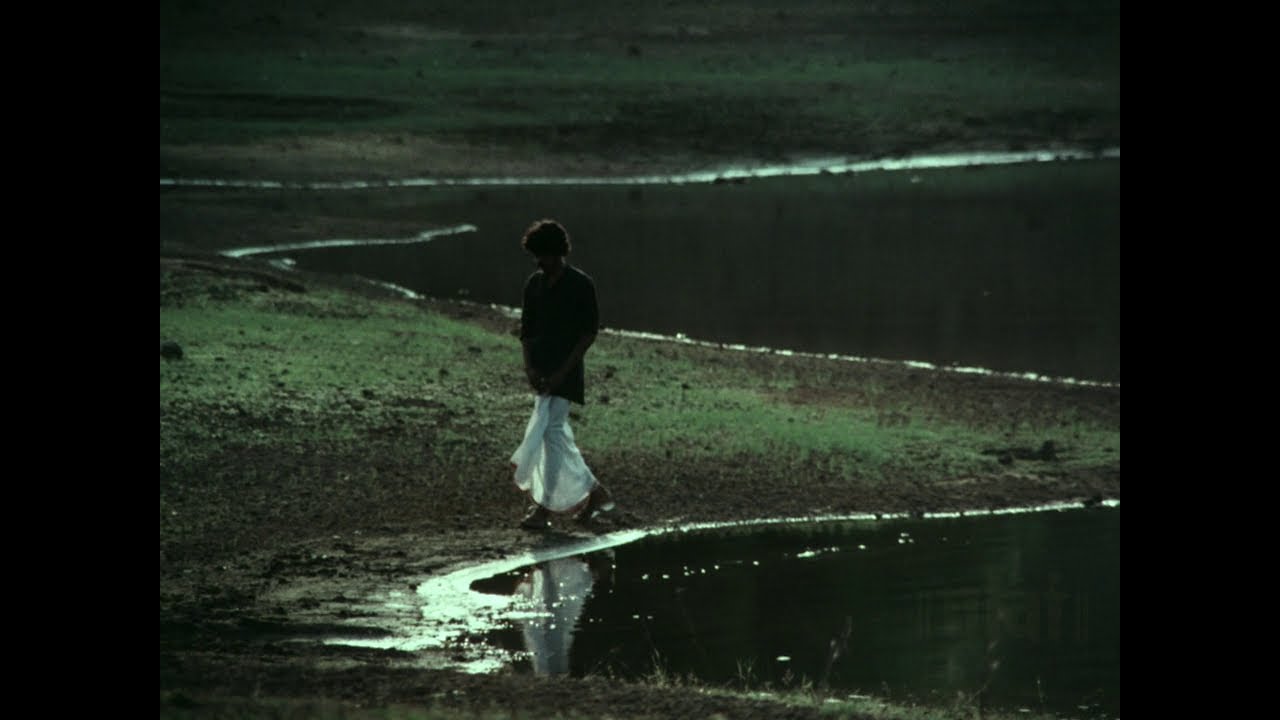
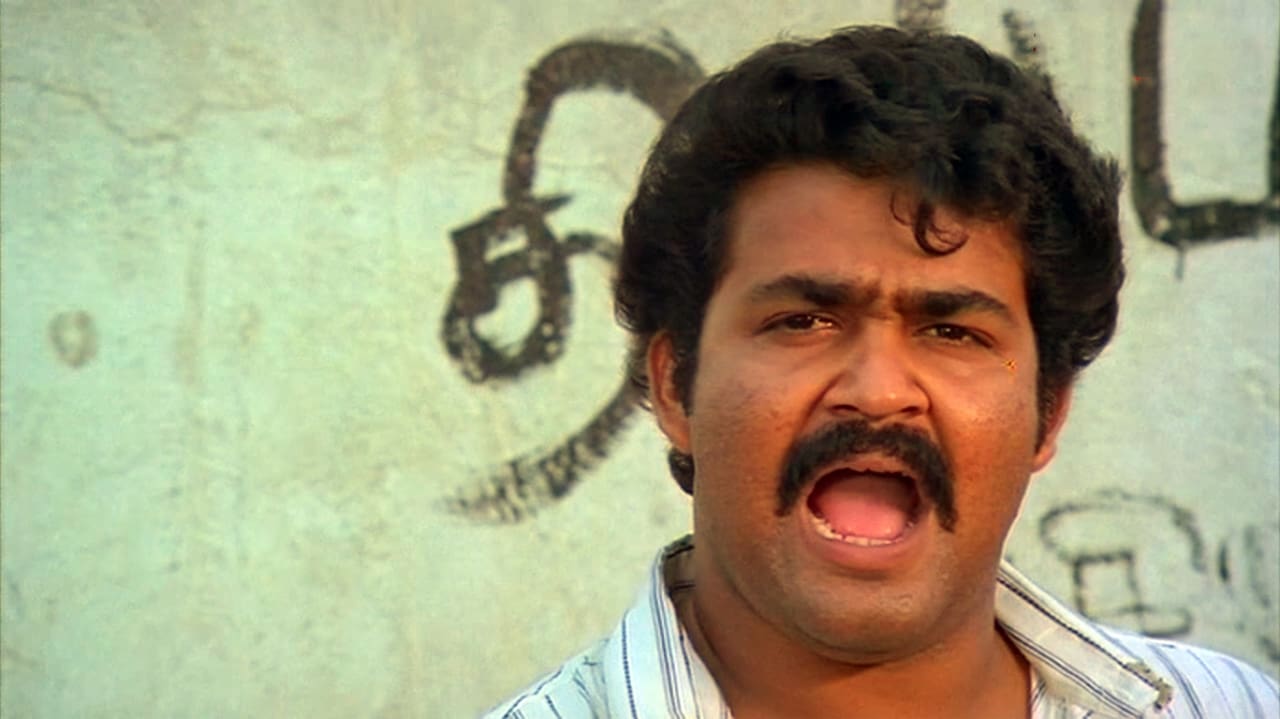
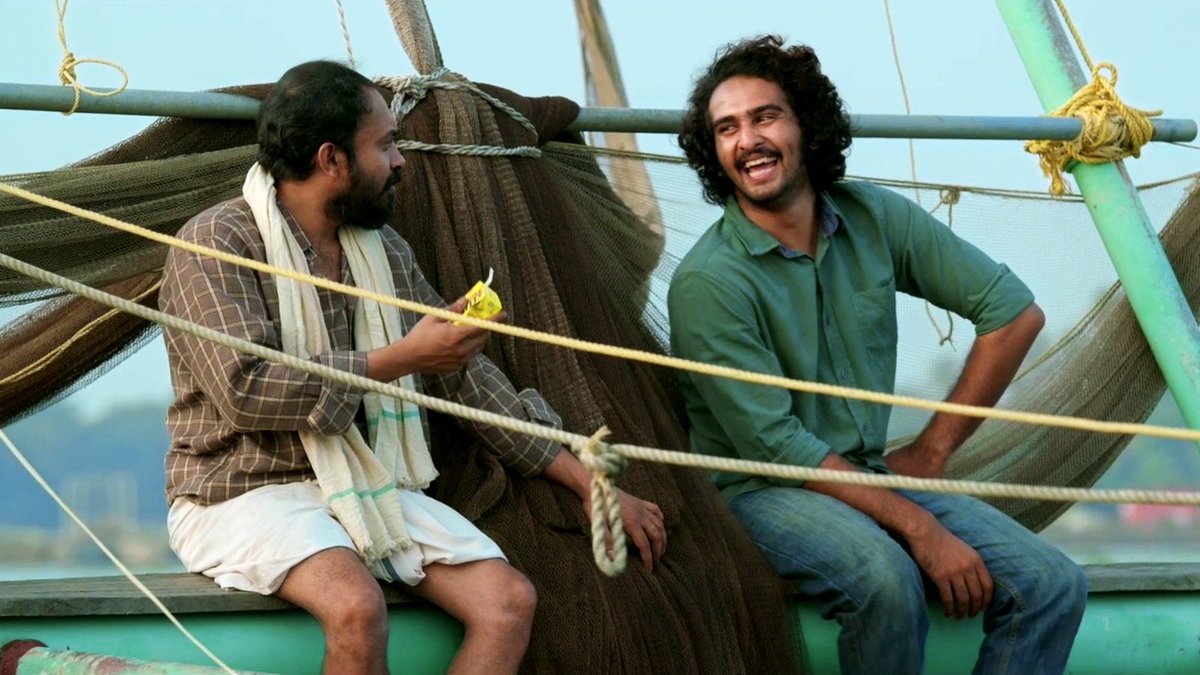
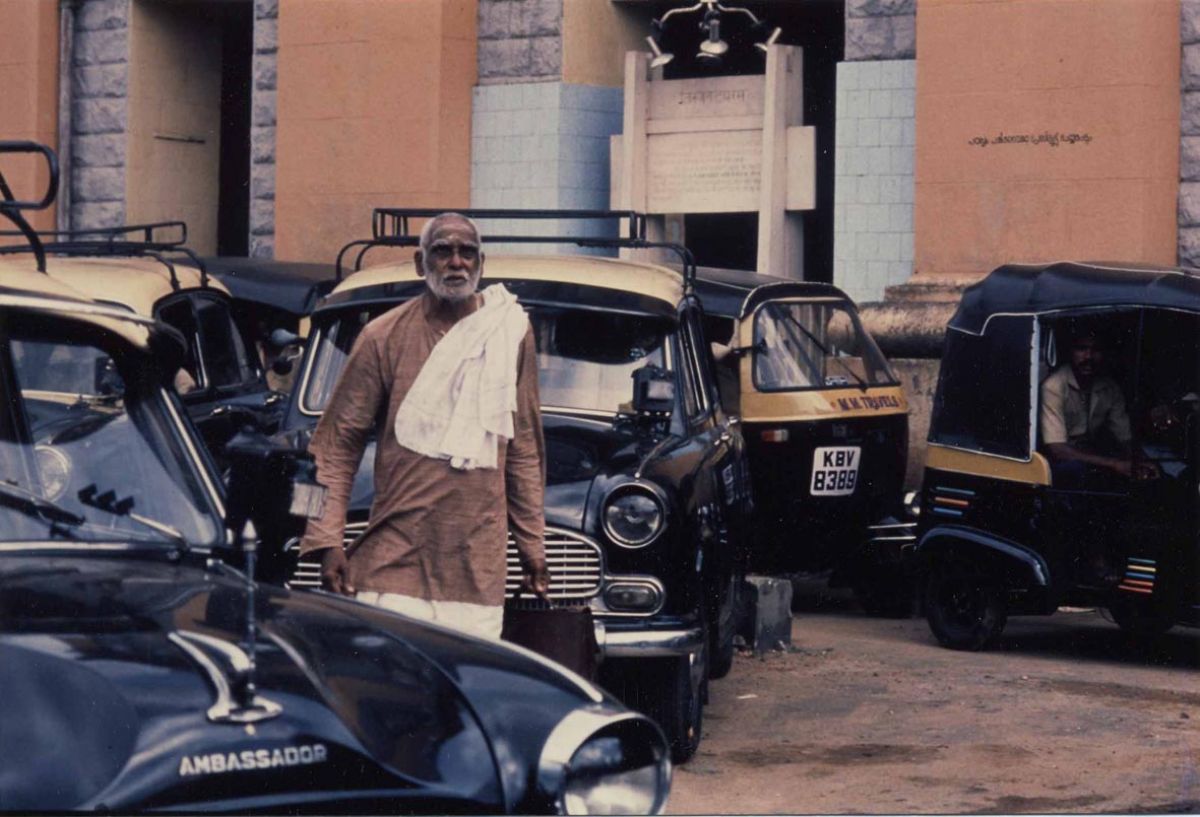
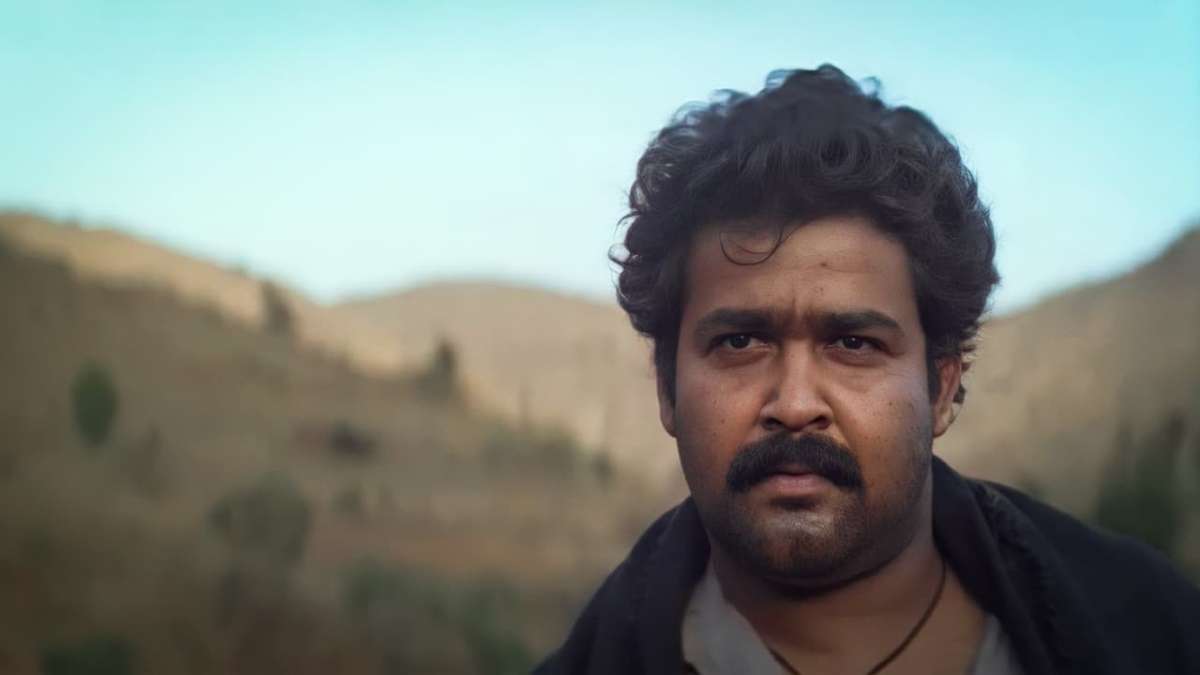
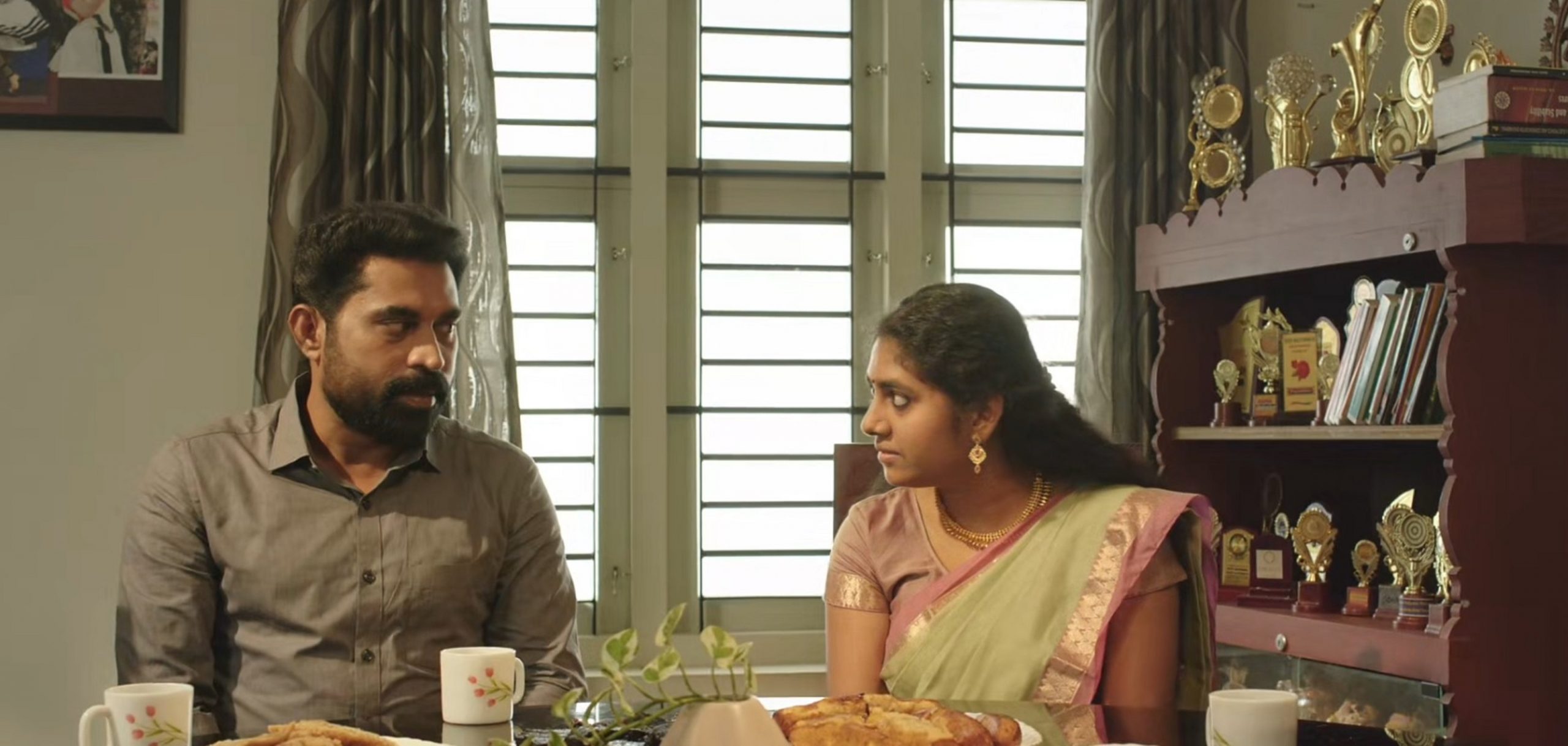
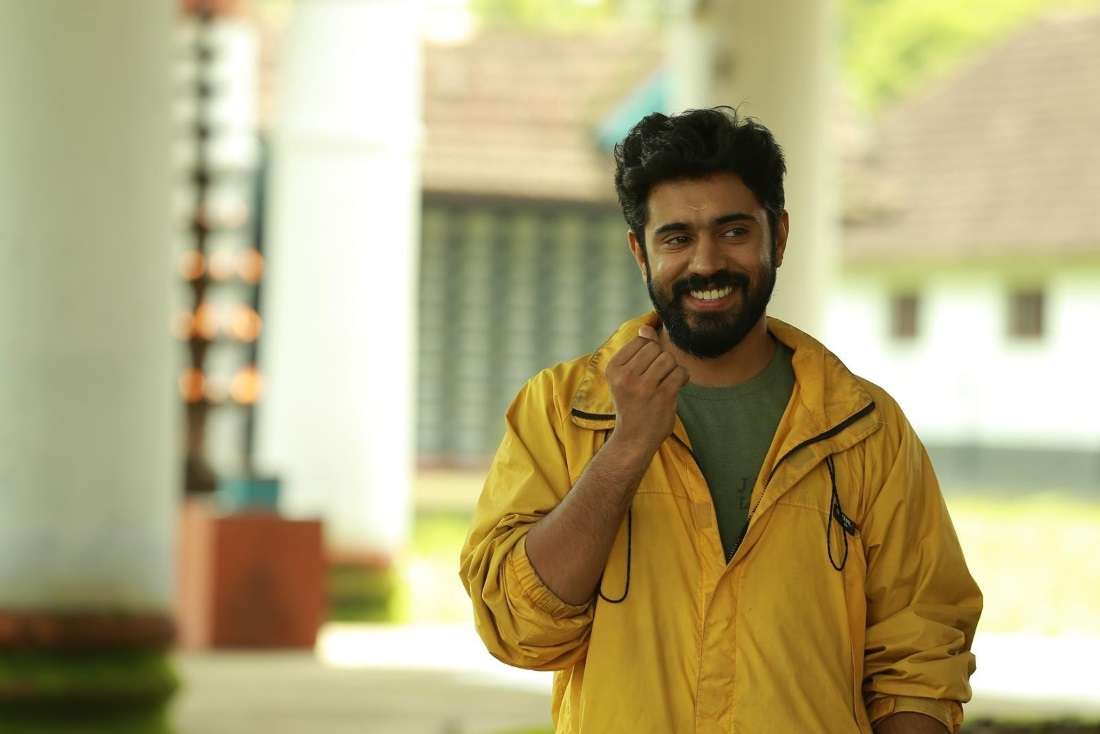
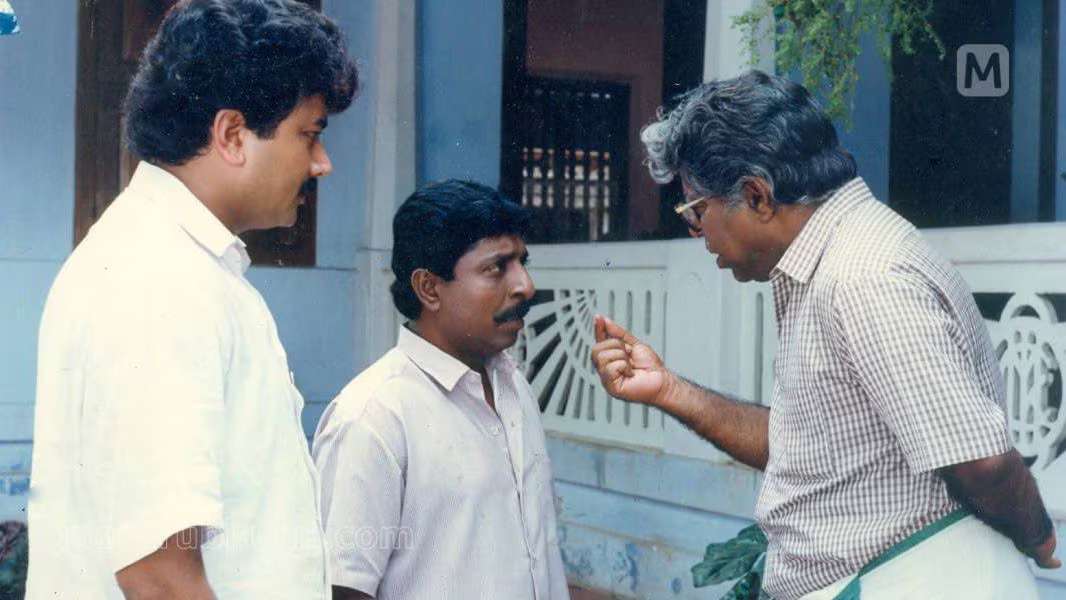
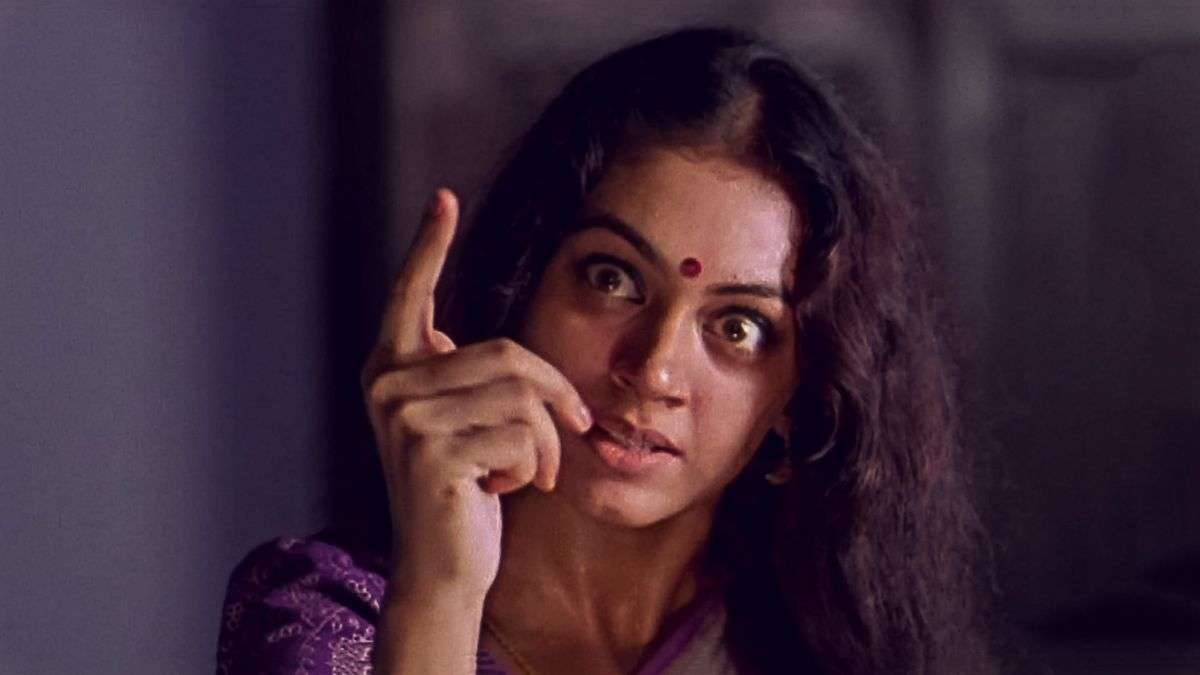
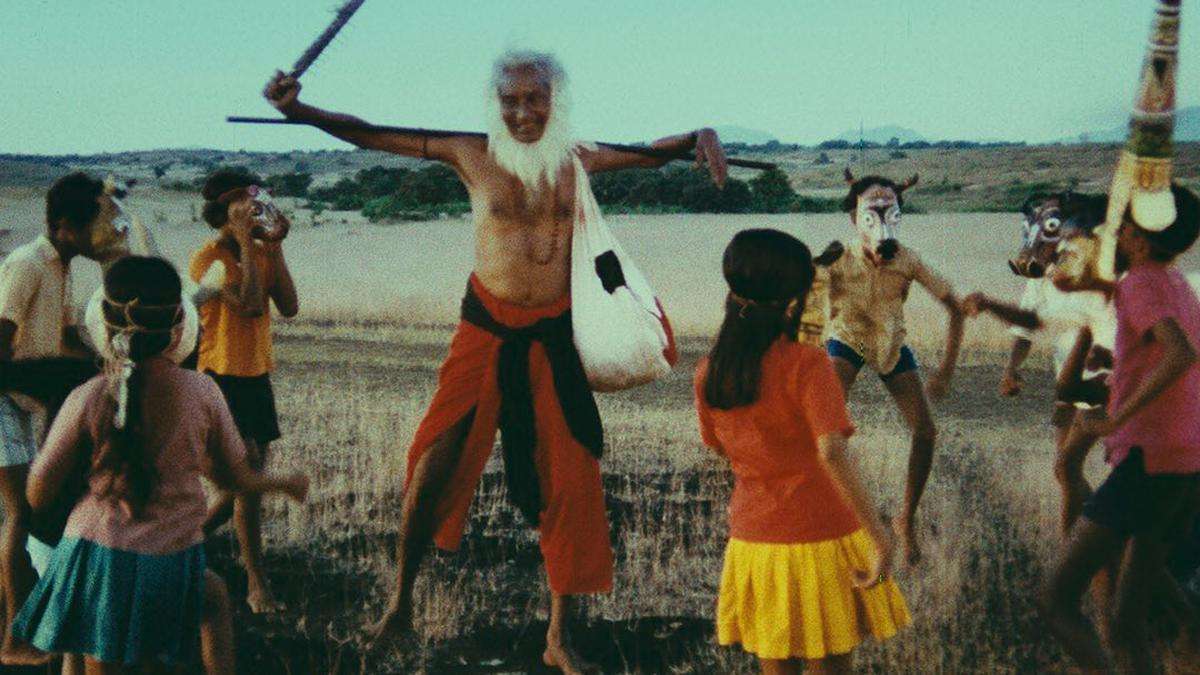
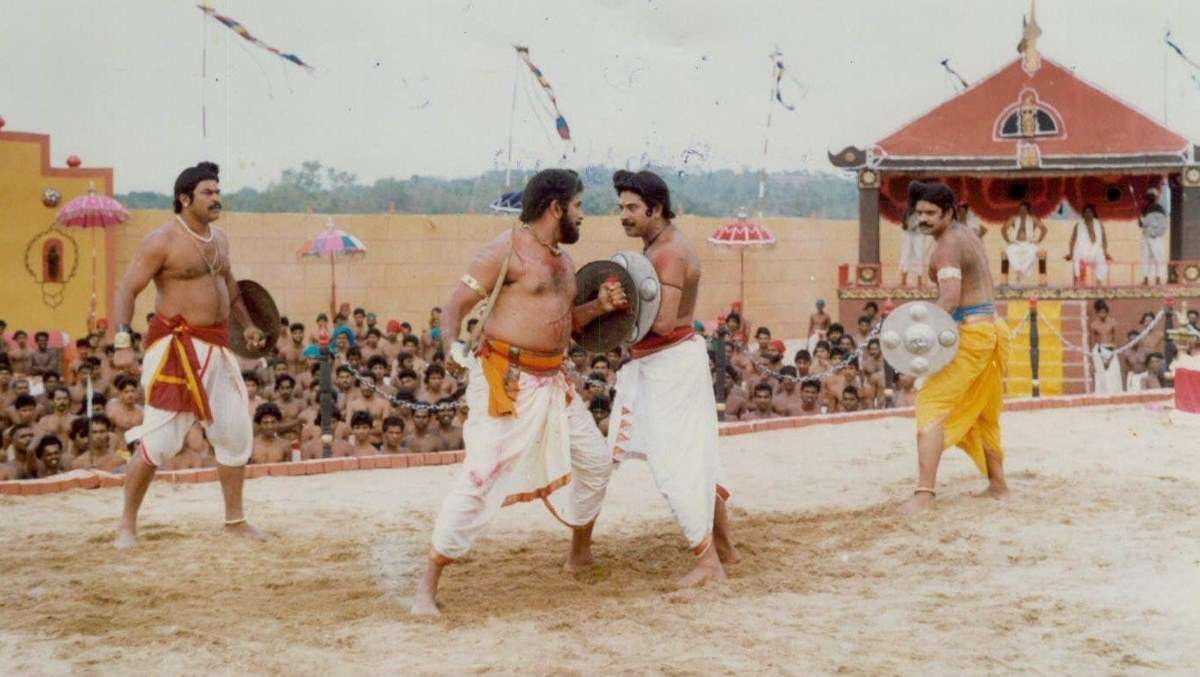
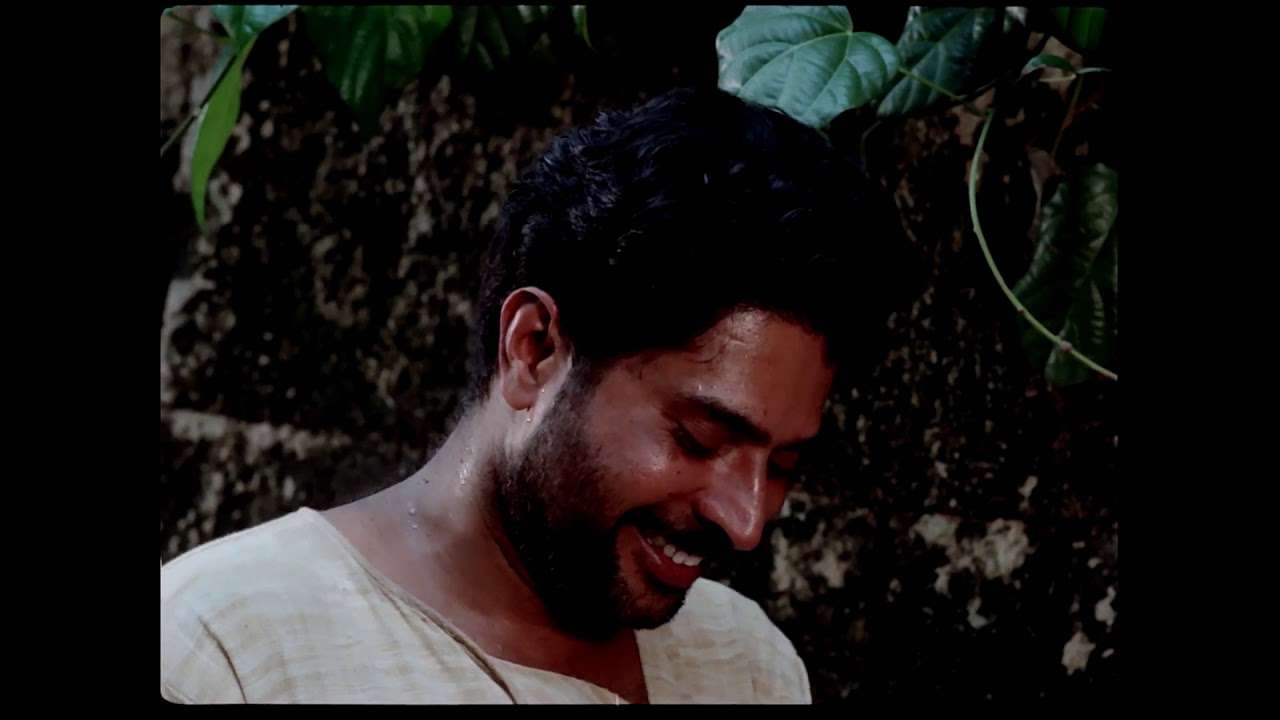
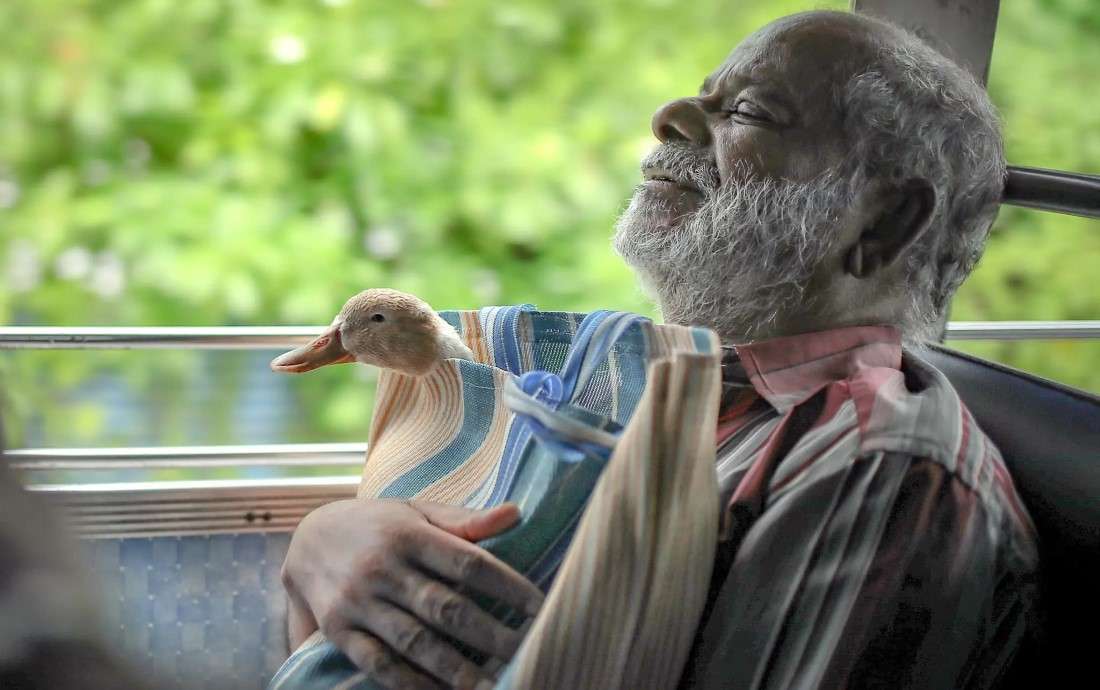
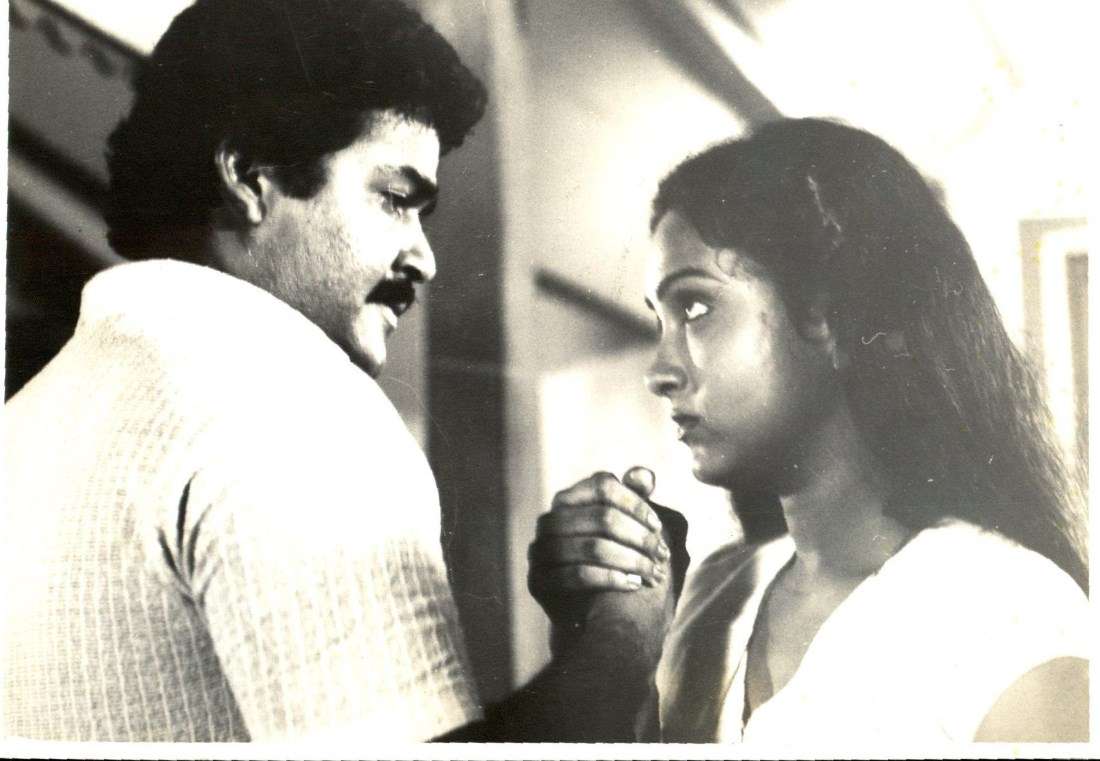
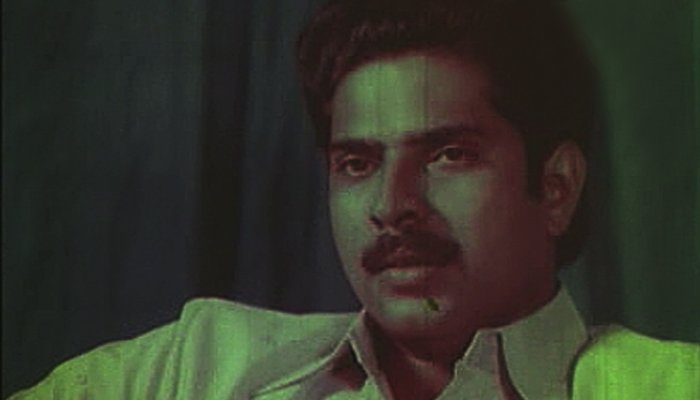
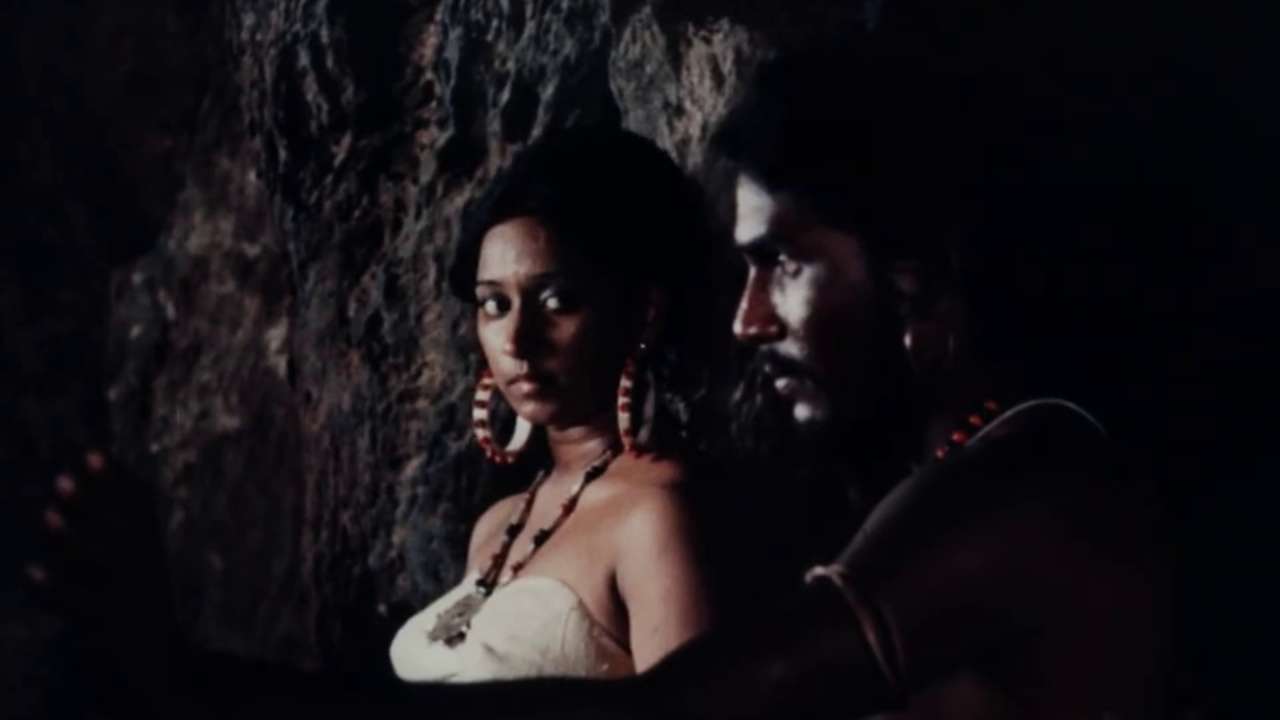
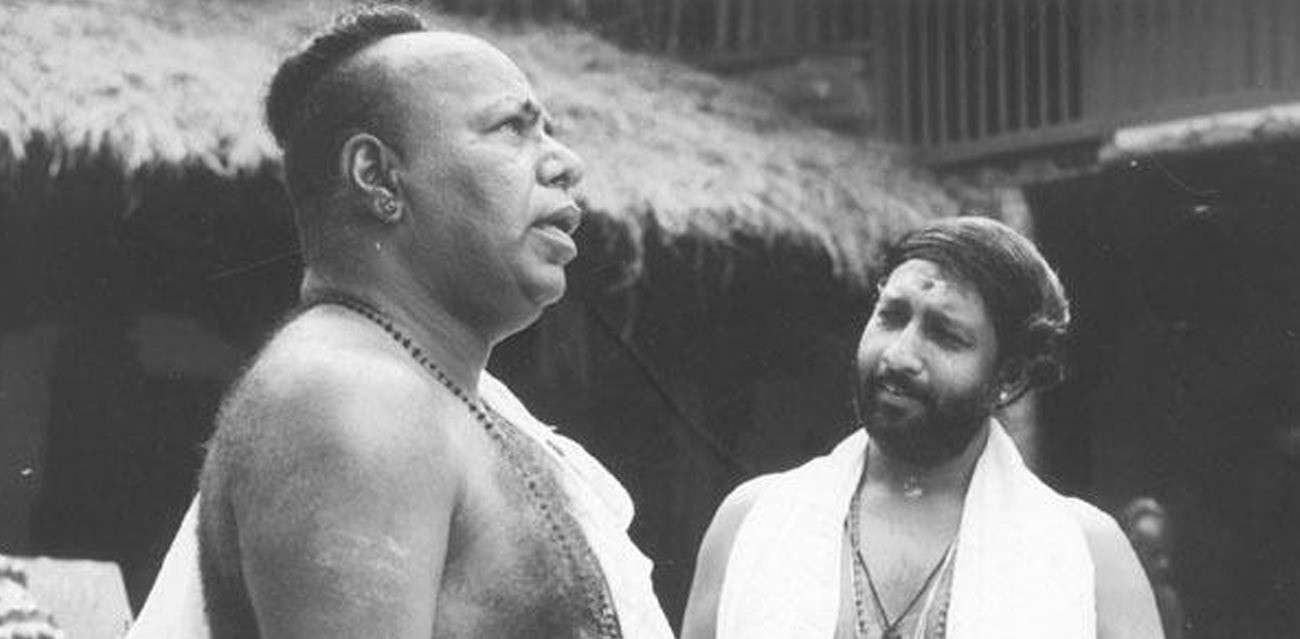
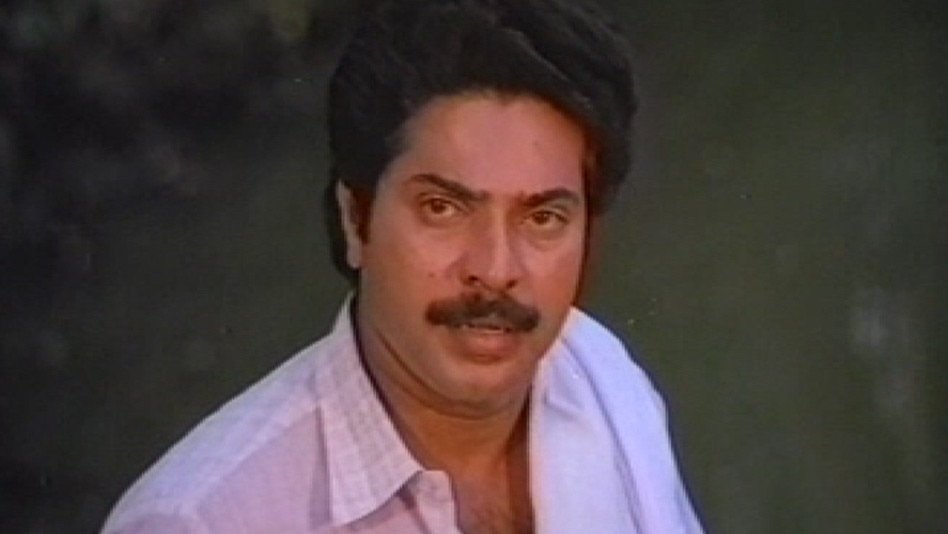
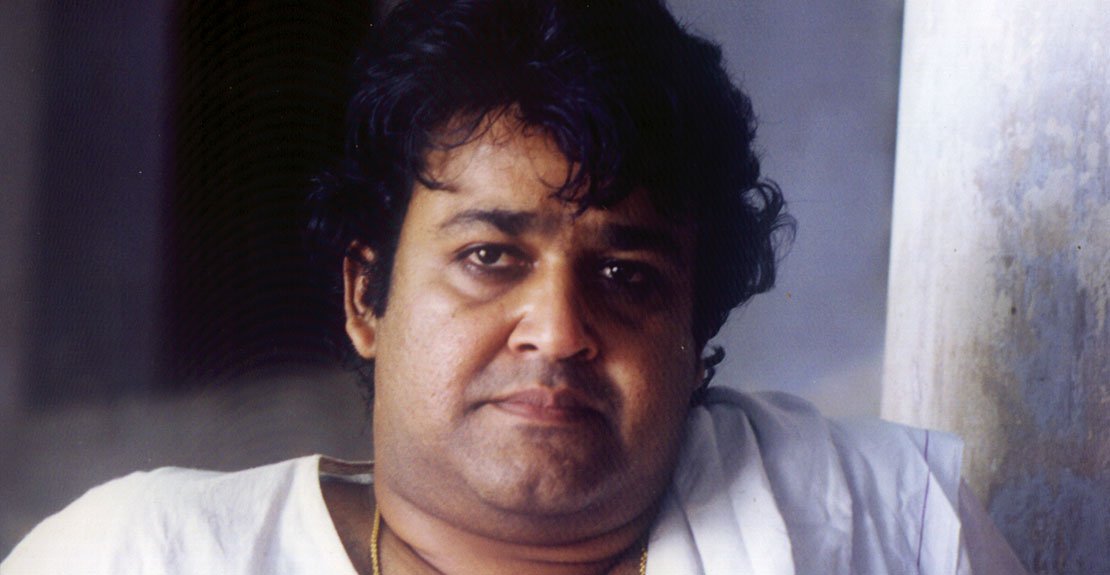
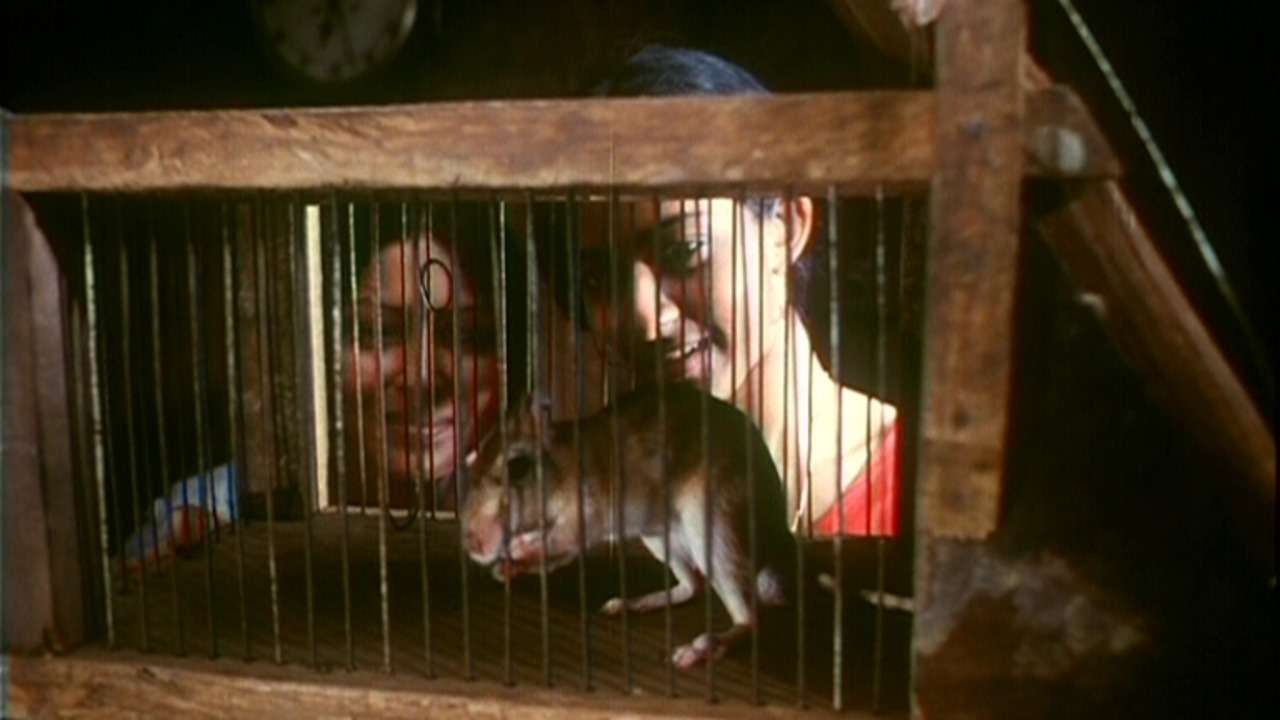
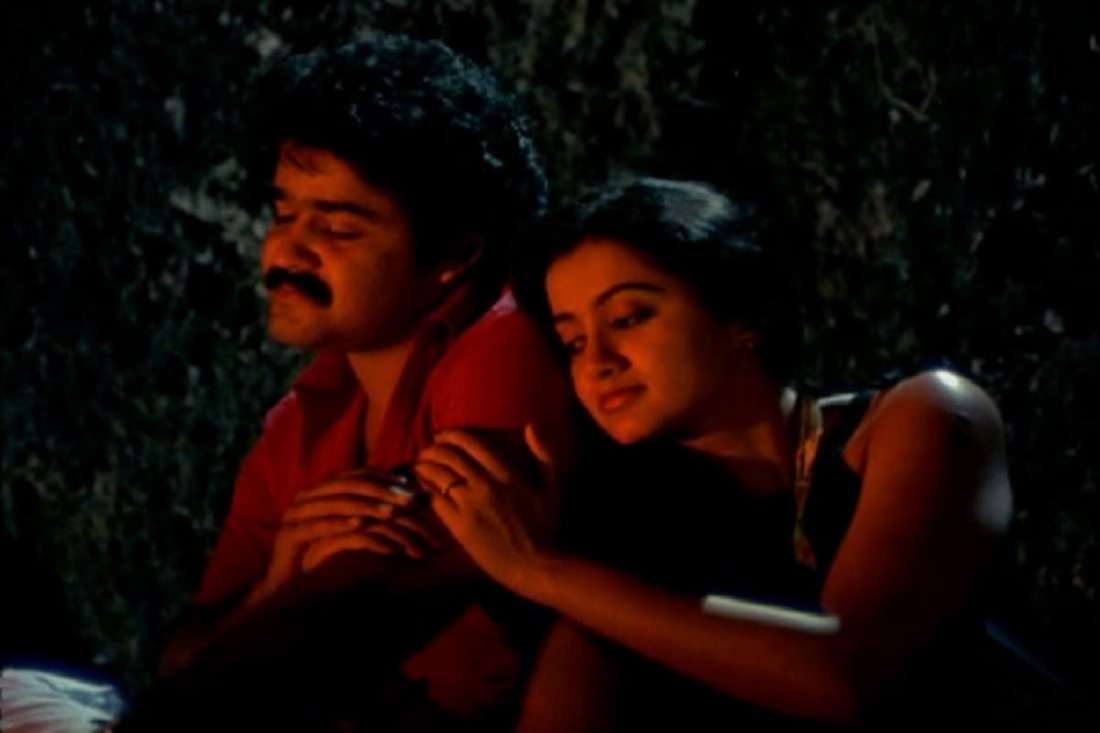
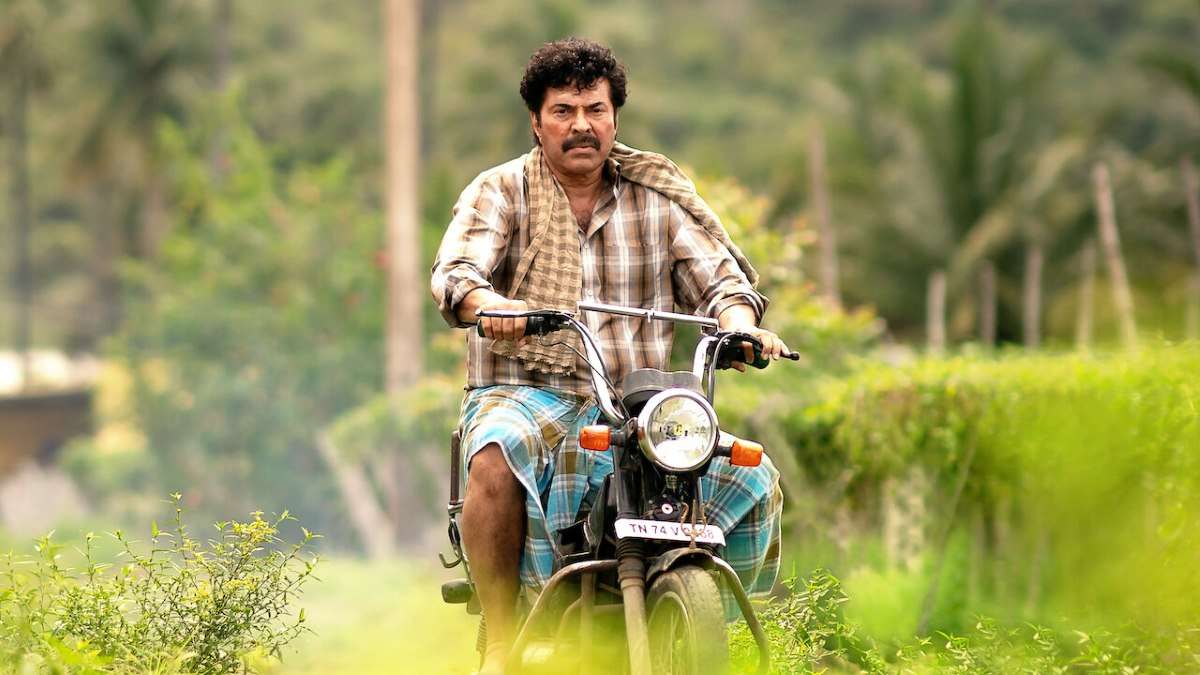
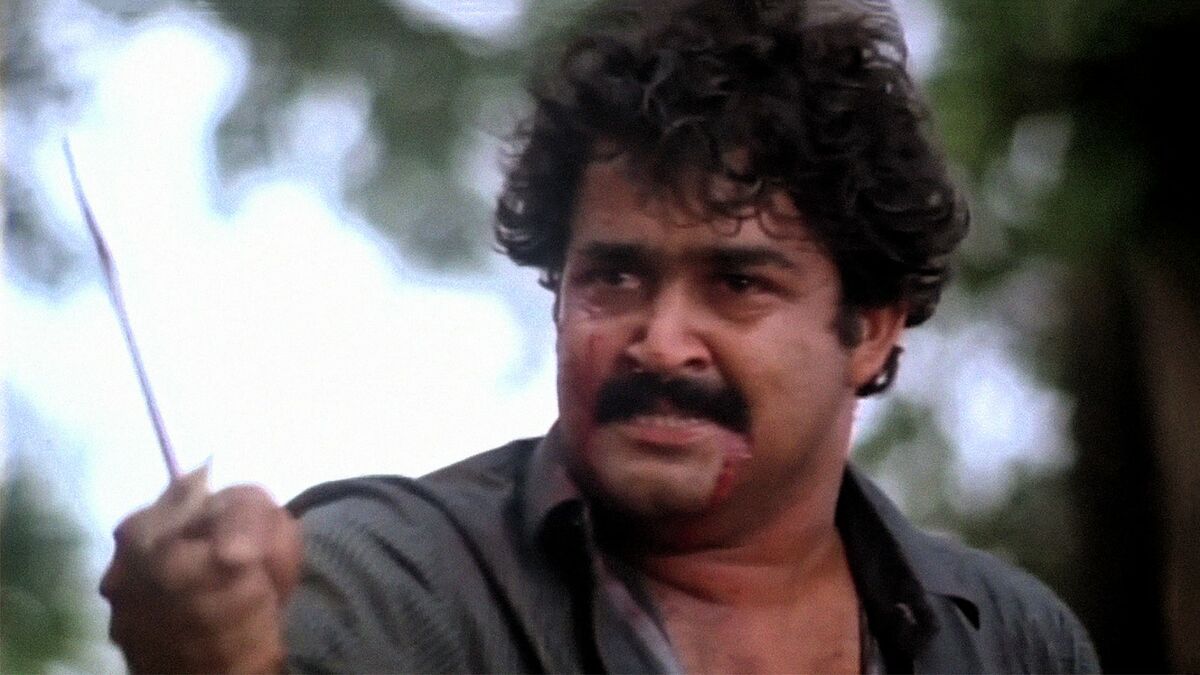
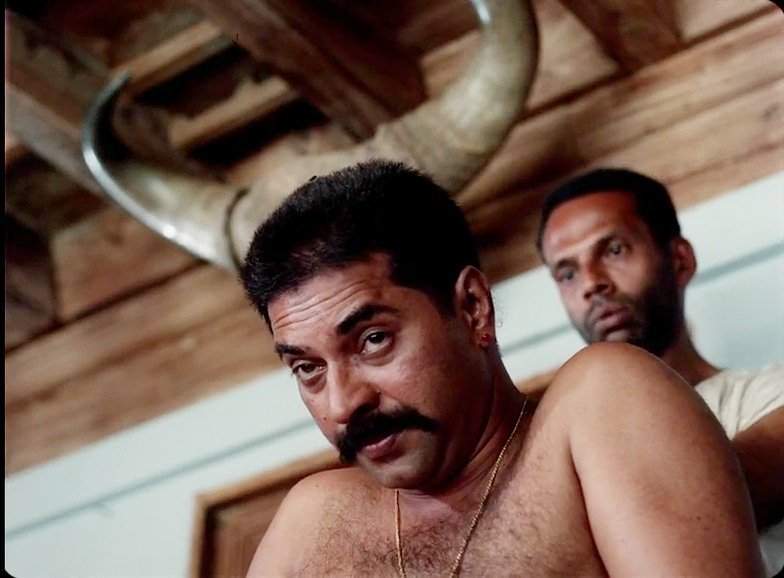
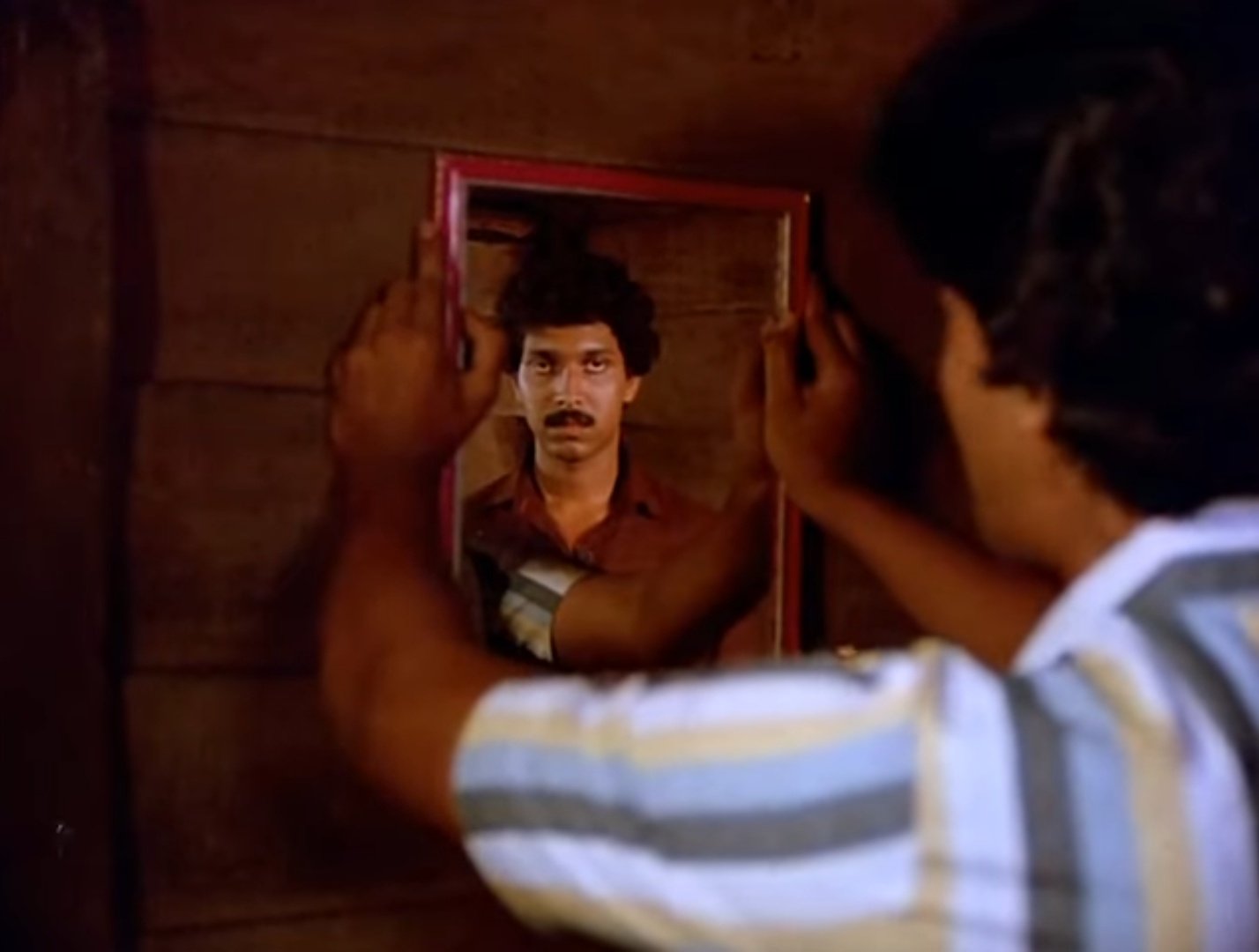
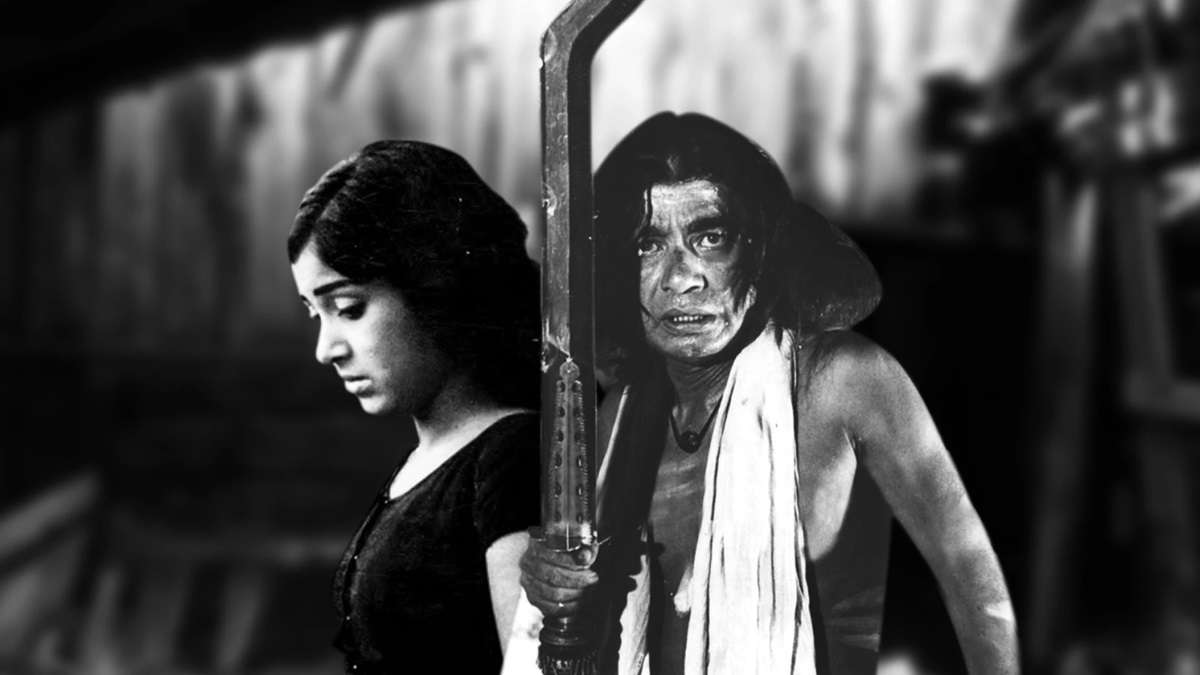
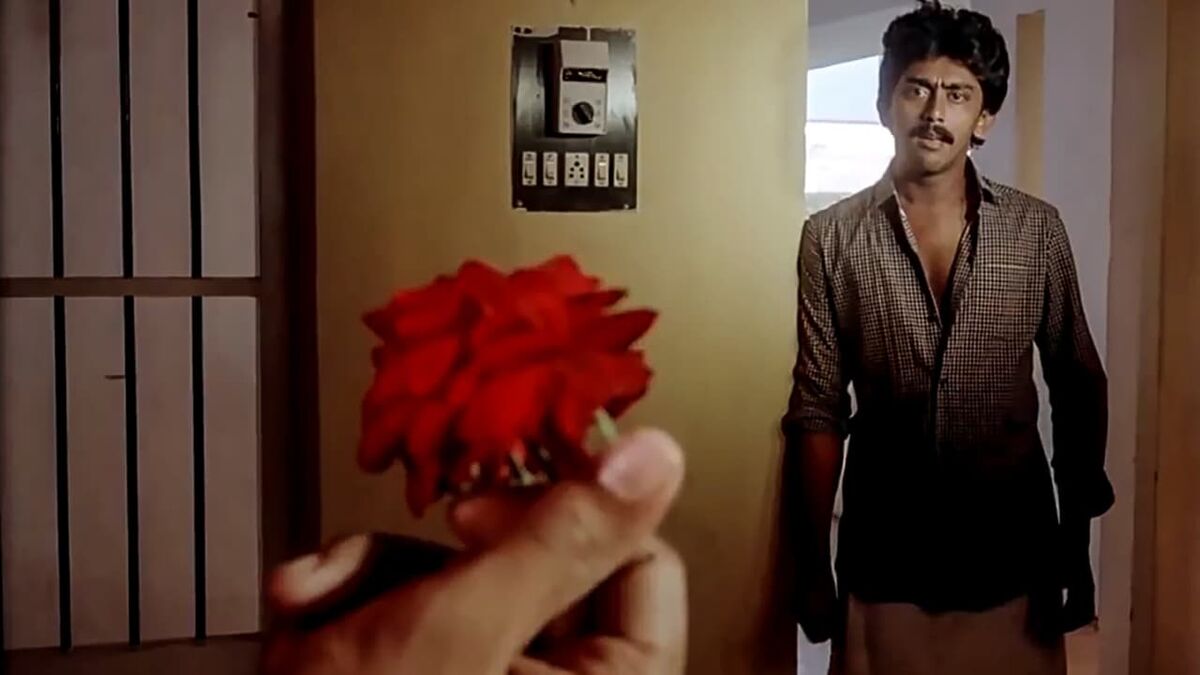
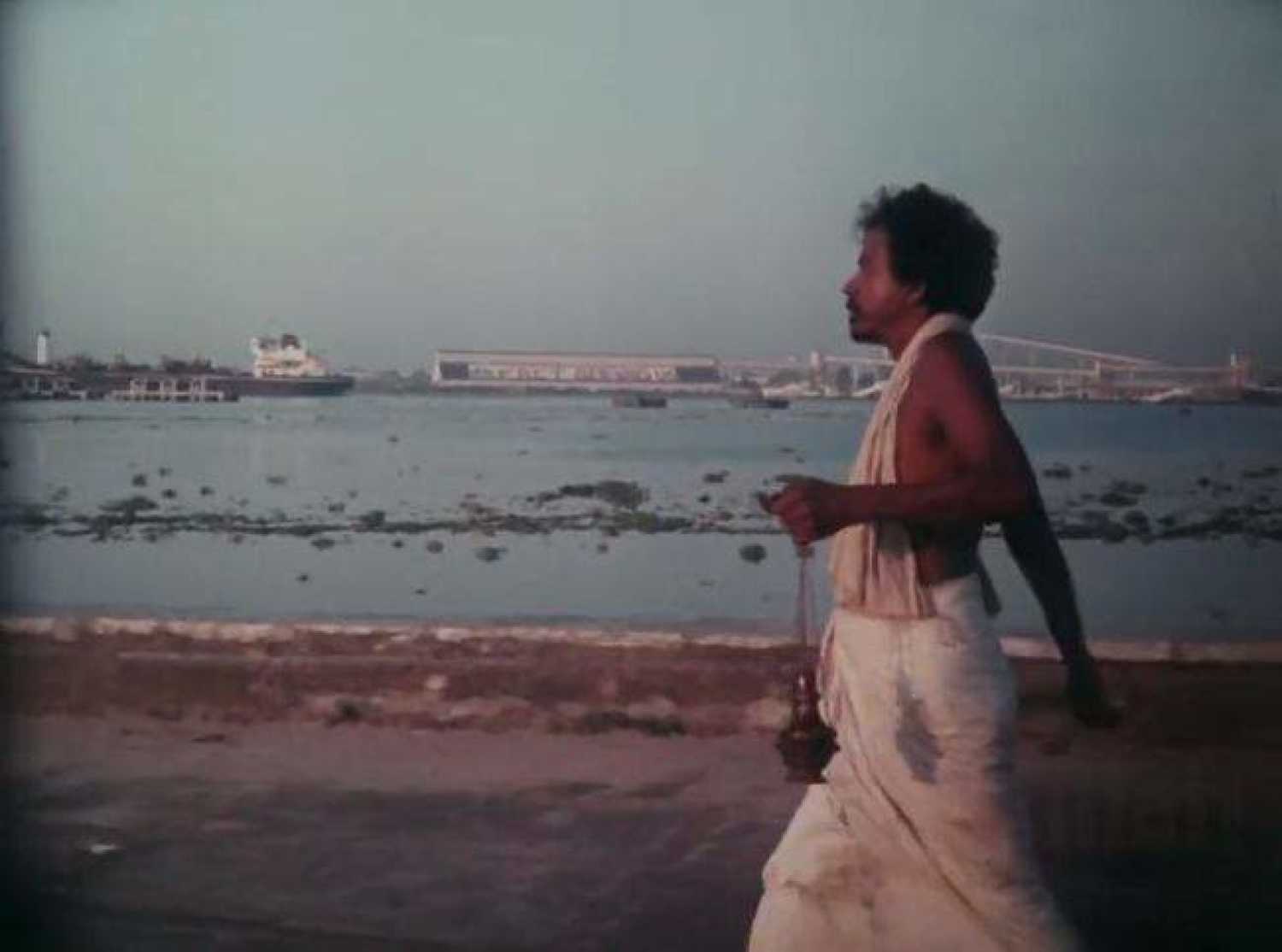


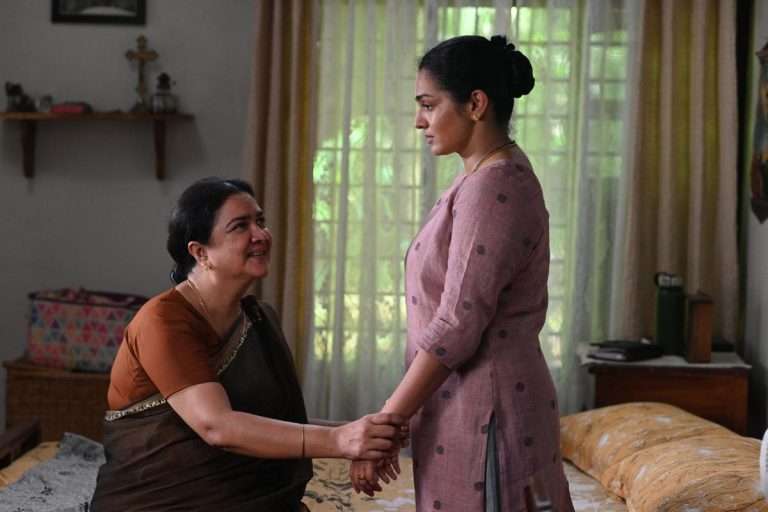
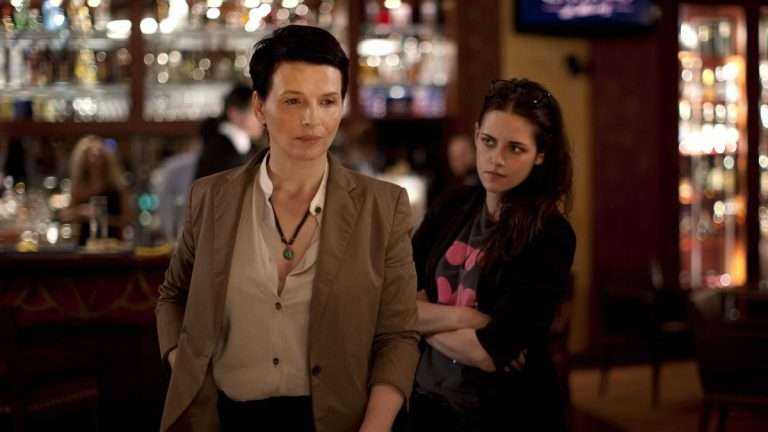

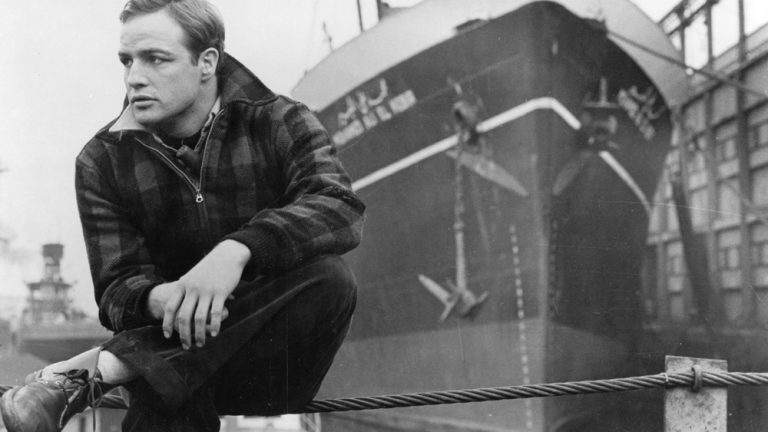

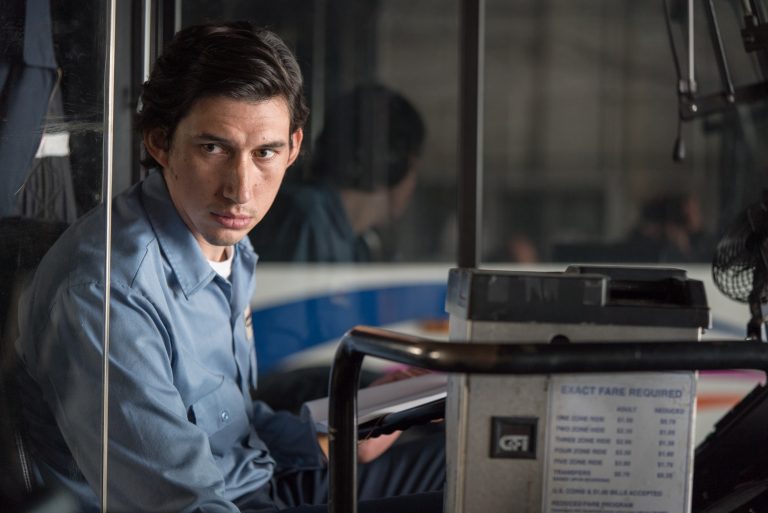
How come you missed churuli?one of the masterpiece